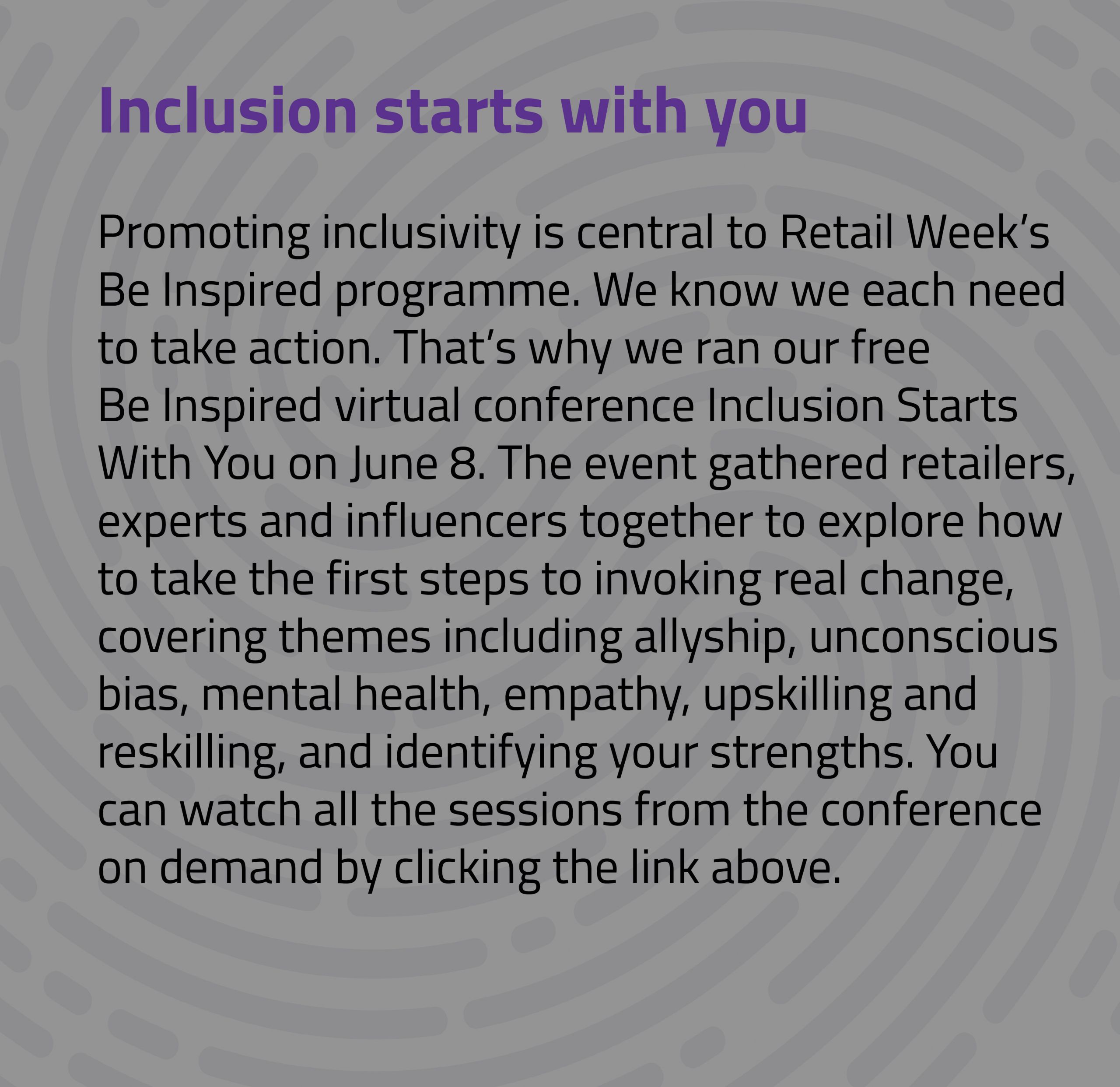
A time for building back better
It’s common knowledge that a balanced and diverse workforce is good for business, benefiting customers, profitability and workplace culture.
But diversity is only the first step – retail leaders must focus on cultivating a truly inclusive environment in order to see the benefits.
The scale of the solution doesn’t yet match the scale of the problem, and that’s where Diversity DNA comes in.
This report, produced by Retail Week Be Inspired in partnership with Workday, will explore how to embed diversity and inclusion (D&I) into the very core of your business, building a strategy that not only creates impact but also results.
We analyse how you can become personally accountable for driving inclusivity and how to lean into D&I strategies even when it’s outside your comfort zone.
Read on to discover:
- How to develop and maintain a truly effective D&I strategy
- The stats behind the headlines – just how diverse is UK retail and how can it do better?
- Ways to speak out on behalf of marginalised voices and lean into difficult conversations as an ally
- Exclusive case studies from retailers and organisations breaking down barriers and affecting real change
Who is this report for?
D&I strategies have often been perceived as the remit of HR or those with ‘diversity’ and ‘inclusion’ in their job titles. Today, D&I is a business-wide issue and it’s everyone’s responsibility; from retail leaders to frontline staff. We encourage everyone to read this report and use the insights to drive change.
- To download a PDF version of the report, click here
Winning strategies
Retail Week has determined the five key strategies all retailers should focus on in 2021 and beyond in order to succeed in a market transformed by technology and shifting consumer attitudes.
| Winning strategies in this report | ||
|---|---|---|
|
|
Brand relevance and evolution | ✔ |
|
|
Agility and partnerships | ✔ |
|
|
CX | |
|
|
Innovation and investment | |
|
|
Culture and purpose | ✔ |
Retail Week subscribers can access our 90-page report Retail Horizon 2021 – Winning Strategies to Navigate Disruption, which provides an overview of our five winning strategies for 2021.

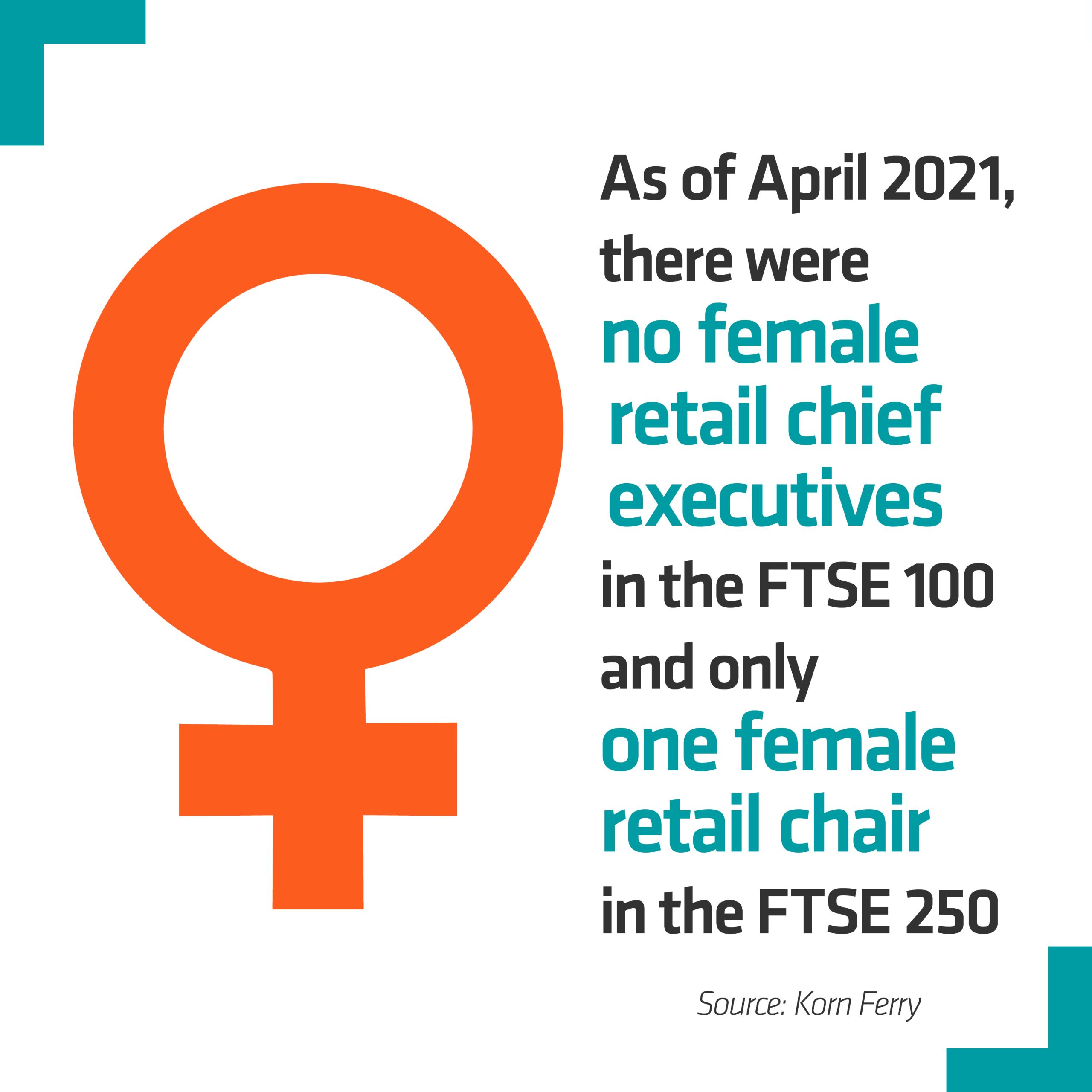
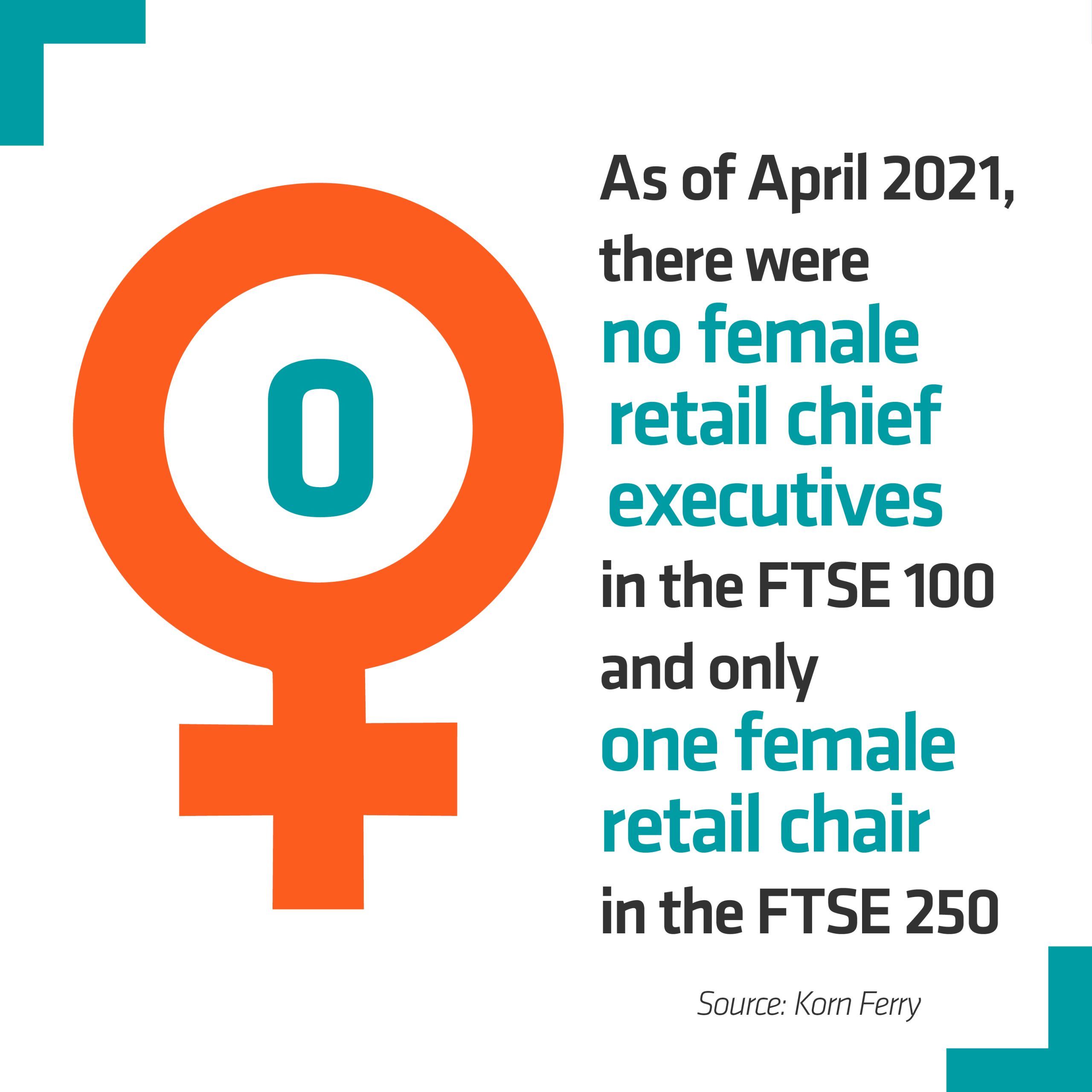
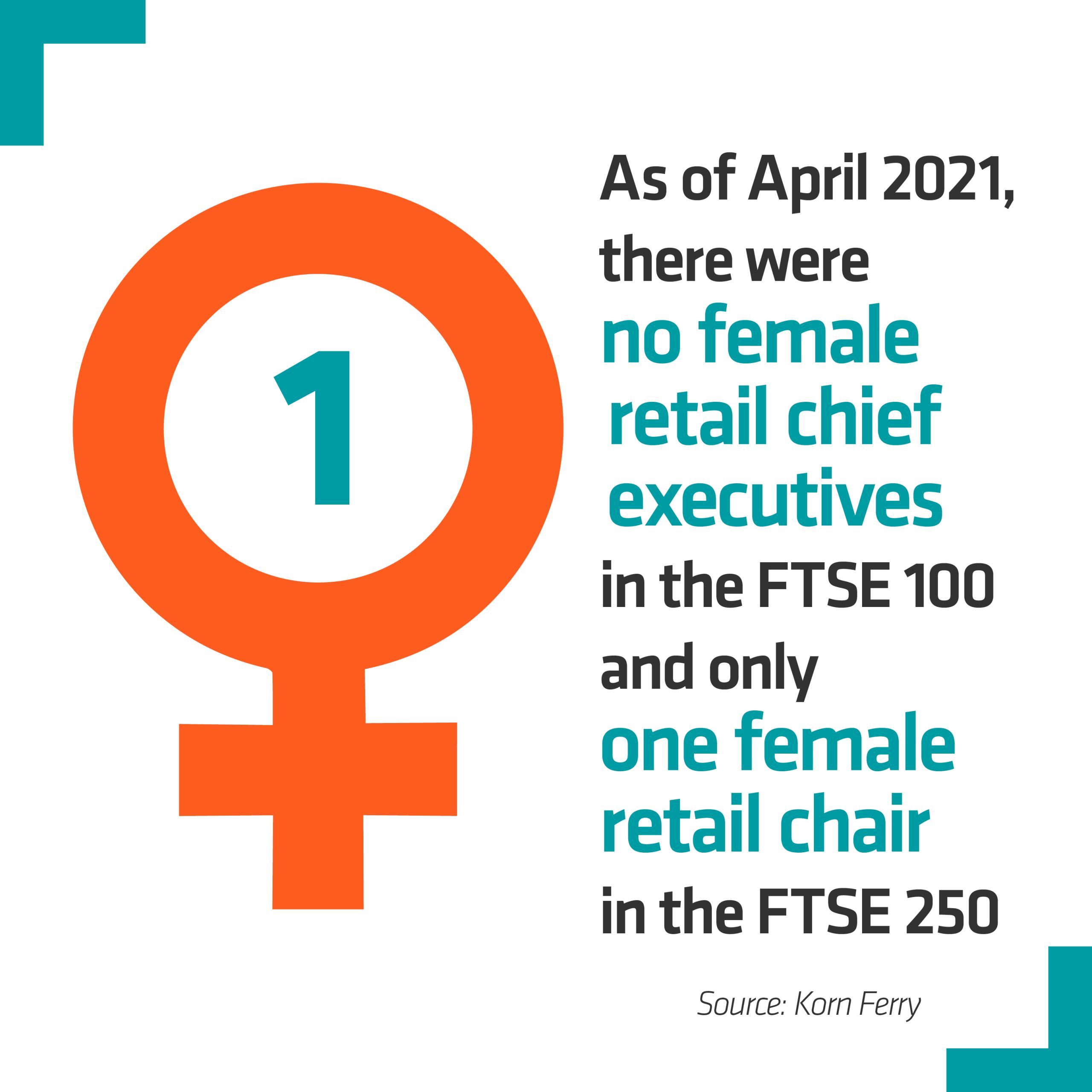
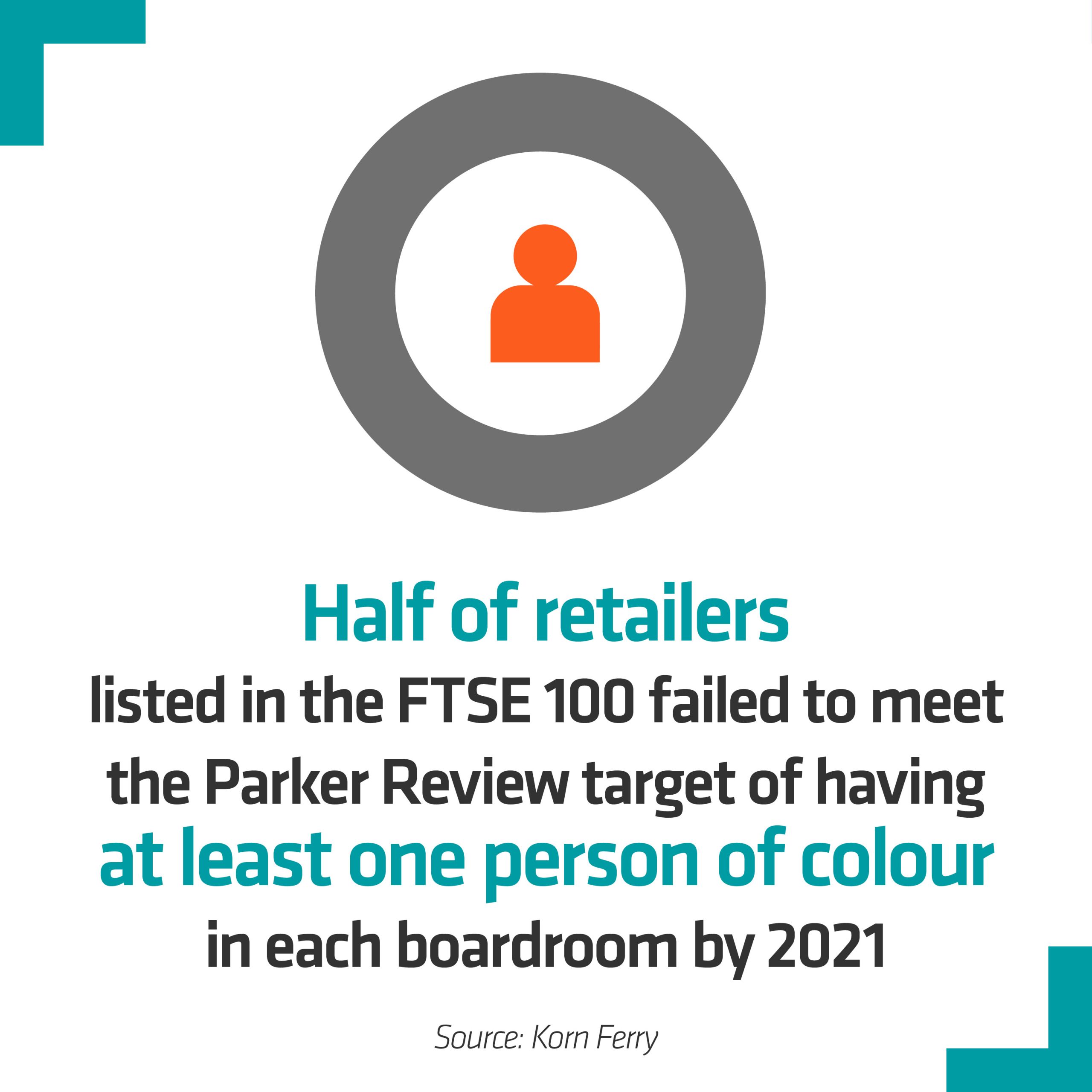
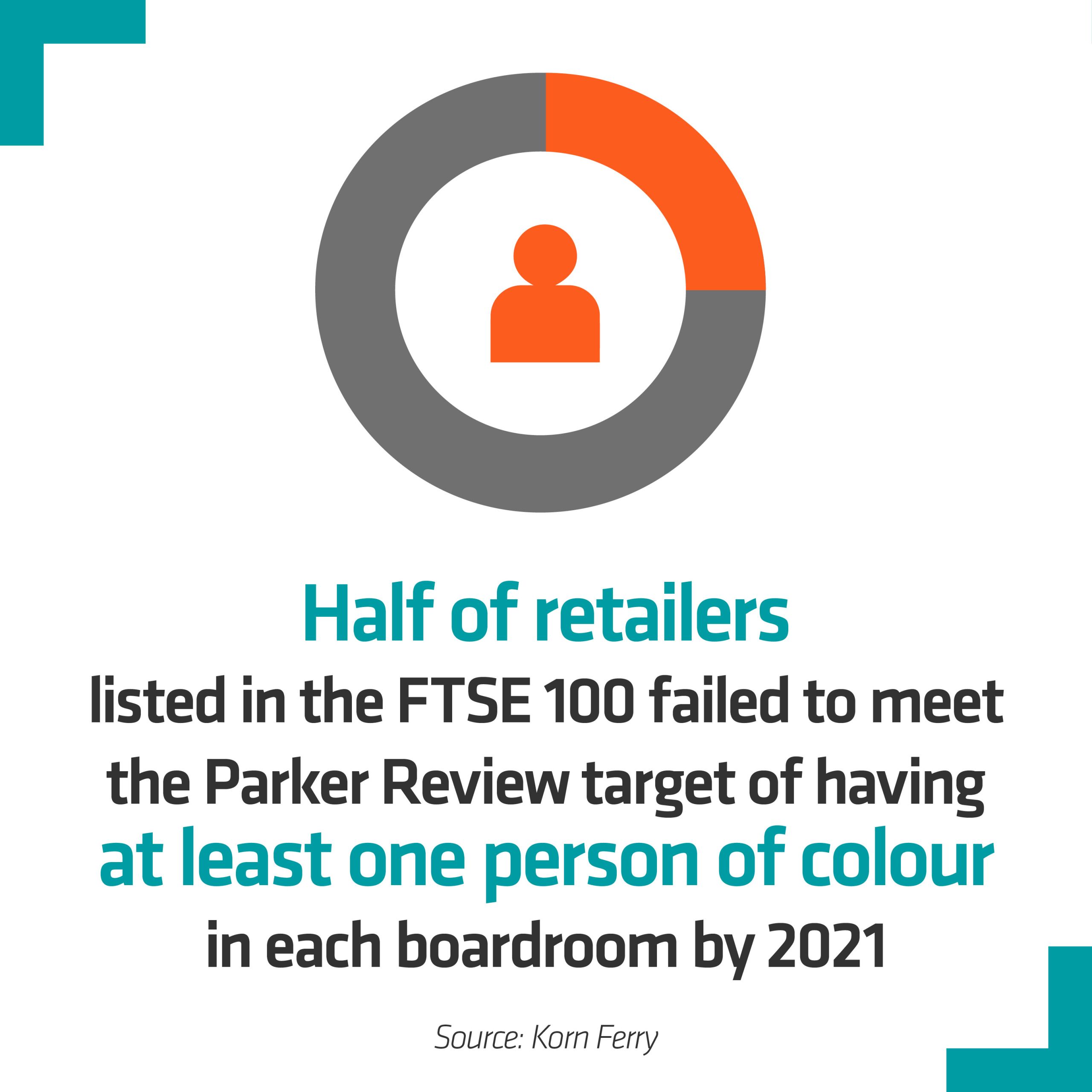
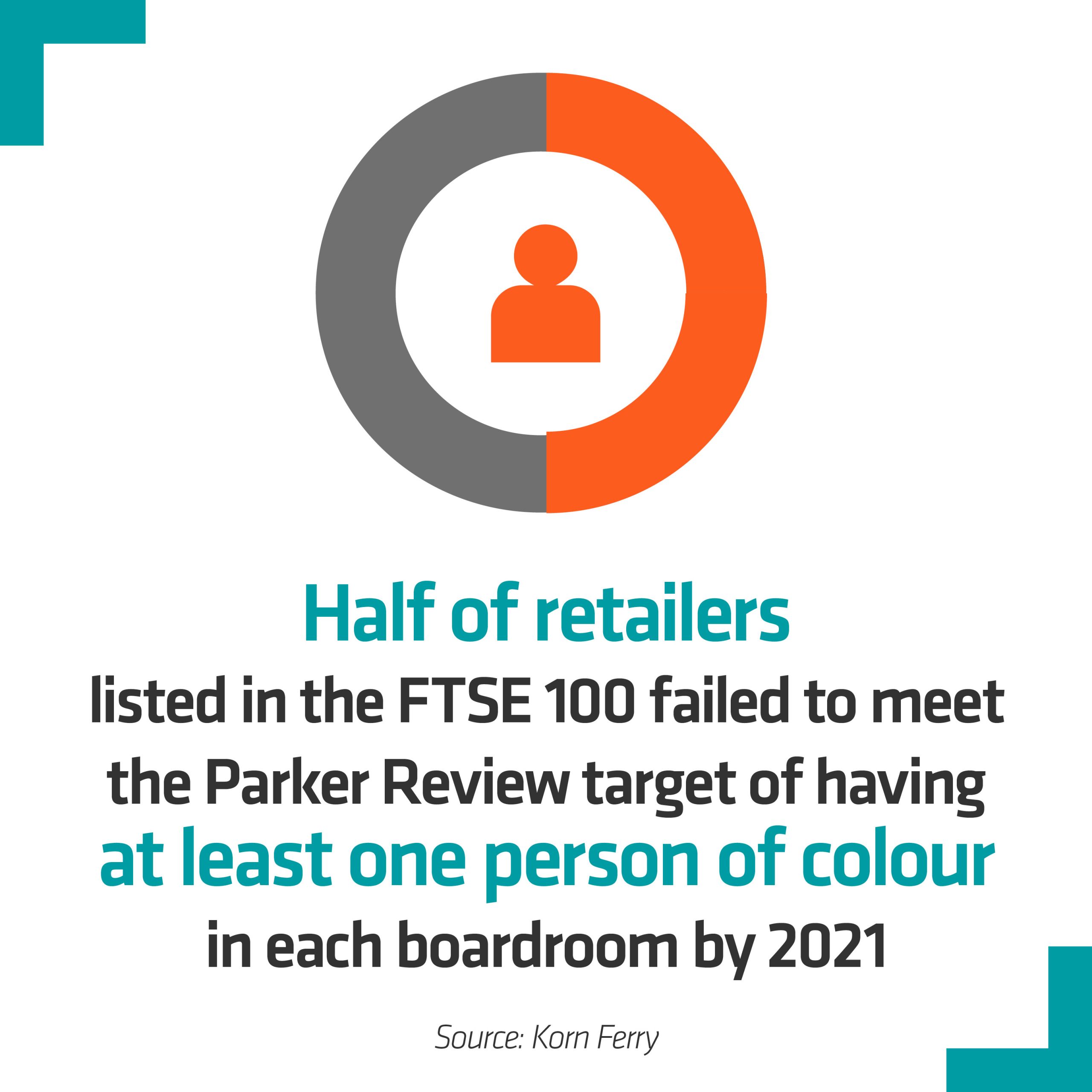
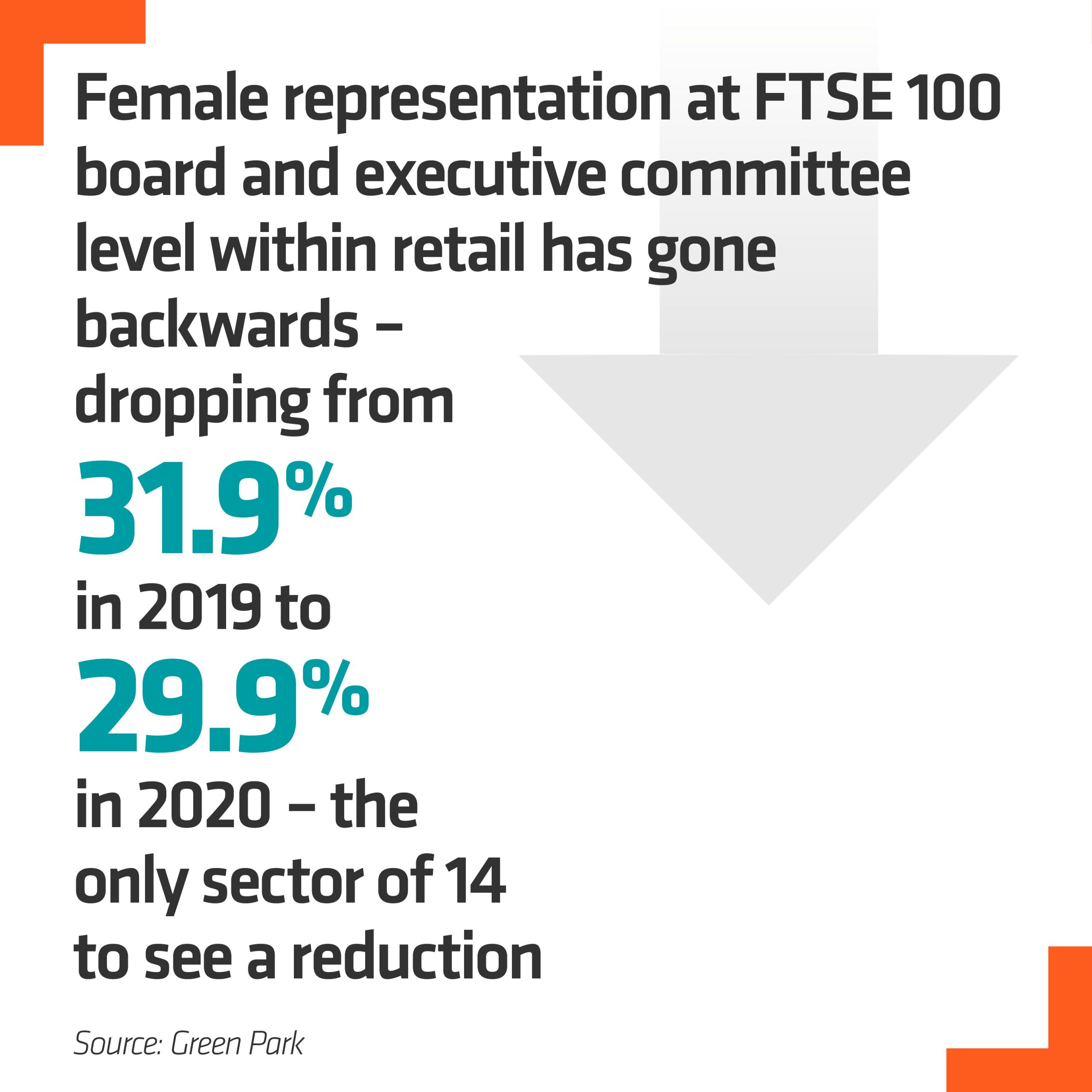
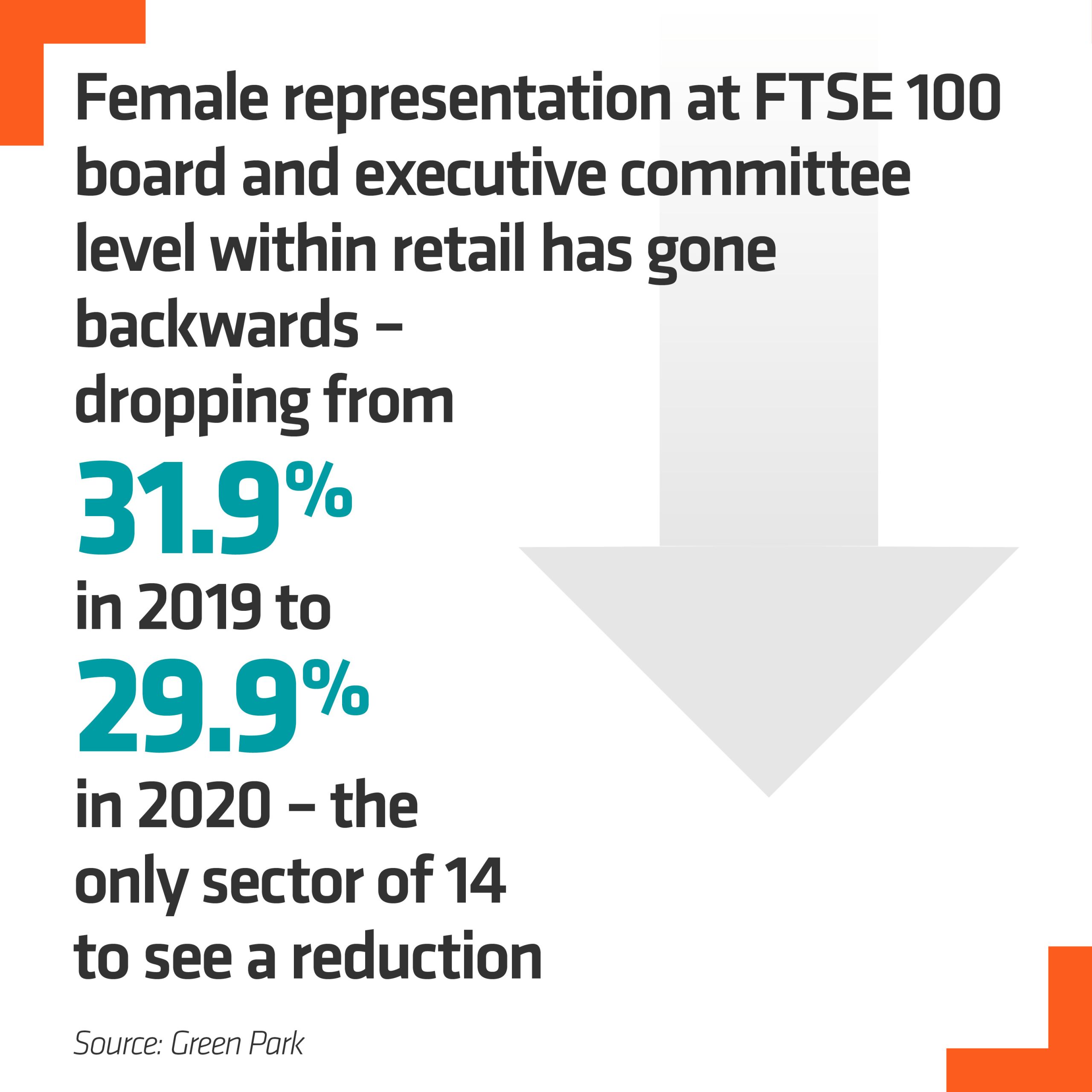
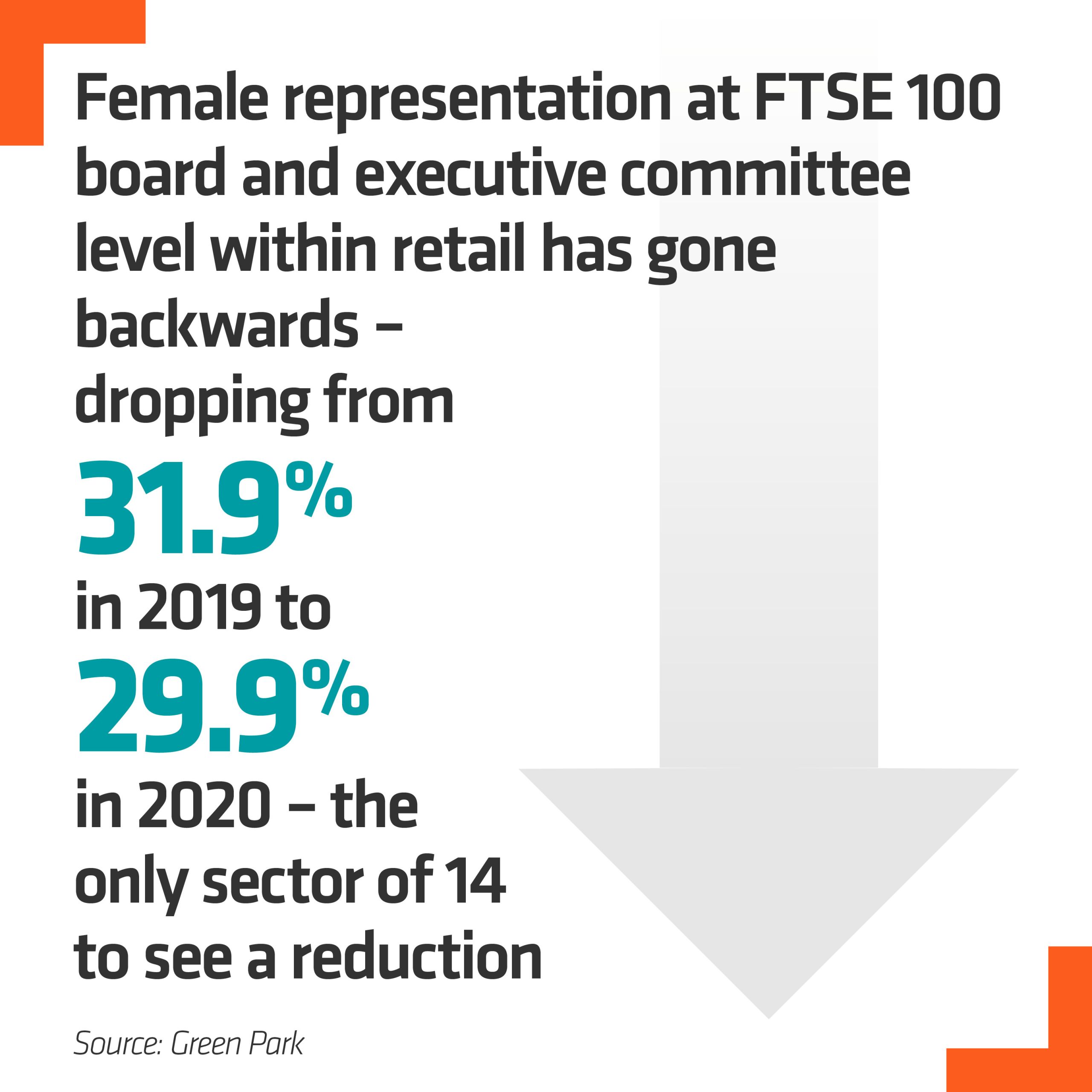
FACT: Diversity drives better business outcomes, including financial performance and innovation
FICTION: UK retailers have realised these outcomes and boast truly diverse workforces
The business case for diversity is staggering: firms in the top quartile for racially diverse executive teams produced 35% higher EBITDA in comparison with the least diverse, according to research from McKinsey. Meanwhile, companies with the most gender diverse executive teams outperformed male-dominated companies by 21% in terms of EBITDA.
Diverse companies were also 70% more likely to capture new markets than businesses that did not actively recruit and support talent from under-represented groups.
Similarly, the average profit margin of FTSE 350 retail companies rises the more women there are in executive and senior leadership roles, proving that diversity really does boost profits.
Retail is one of the worst performing sectors for diversity – and it is going backwards
Data and analysis on the diversity of retail workforces, or rather lack of it, makes for stark reading.
Looking at the statistics below highlights how much more progress is needed to achieve even rudimentary levels of diversity across UK businesses. Disappointingly, the retail sector is one of the worst performing, and far behind other sectors such as telecoms and health.
IN NUMBERS: Gender and ethnic diversity in retail
- Board level and executive committee roles held by women in the FTSE 100 have, on average, positively increased from 2019 to 2020 – up from 29% to 32%. However, in retail female representation at this level has reduced. Of the 14 sectors Green Park analysed, retail was the only sector to have gone backwards, dropping from 32% in 2019 to 30% in 2020.
- As of April 2021, there were no female retail chief executives in the FTSE 100 and only one female retail chair in the FTSE 250, according to research by Korn Ferry.
- Only 11.5%, or 34, of those in the top leadership positions (chair, CEO and CFO) at FTSE 100 companies in 2020 were women, according to analysis from consultancy Green Park. It will be 2059 before women hold 50% of these top three roles among the FTSE 100, predicts Green Park.
- There were just 13 female CEOs of FTSE 350 companies – equating to 5% of company leaders – as of April 17 2020, The Pipeline reported. In fact, as of 2020, there were as many CEOs named Peter among the FTSE 100 as women – six of each.
- Analysis of 200 UK leading retailers shows only 5% of boards, 6% of executive committees and 6% of direct reports to boards are from an underrepresented background – compared to 13% of the British population – the British Retail Consortium (BRC) reported in March 2021.
- Korn Ferry’s Consumer Diversity Index reveals that 17% of FTSE 100 companies have failed to meet the target of having one person of colour in each of their boardrooms by 2021, with half of listed retailers failing to have any ethnic minority representation.
- Korn Ferry also revealed that there are just 11 chief executives of an ethnic minority background leading the consumer companies listed in the FTSE 100, FTSE 250 or AIM, all of whom are male, while just five companies have diverse chairs.
- Retail Week’s Retail 100 index – an annual ranking of UK retail’s most influential leaders – featured only one Black person in 2021; Dame Sharon White. This is reflective of, and holds a mirror up to, the industry.
Jo Heath, Green Park partner and head of practice for D&I, culture and ethics, says there is “a clear evidence base and data that find disproportionate outcomes exist in our workplaces and in our society”.
“These outcomes go on to affect the promotion and progression of some groups, which is evident in the retail sector where ethnocultural diversity is present in the more junior grades and then drastically diluted at store manager and senior leadership level.”
How is retail diversity perceived by those who work in the sector?
Attitudes to how retail leaders and staff perceive diversity are changing for the better. In September and October 2020, Retail Week interviewed 500 store staff for its Talking Shop report to uncover the realities of working in retail. More than four-fifths (87%) said they believed D&I was taken seriously and this was particularly true at regional manager level, where 73% of respondents said their employer took it “very seriously”.
Similarly, 84% of 200 UK retailers said D&I was a priority when surveyed by the BRC in March 2021. Such figures can give retailers hope that their D&I initiatives are having a positive impact on workplace culture and staff morale.
The D&I data dilemma
While the data we’ve gathered offers an accurate picture of where retail currently stands on gender and ethnic diversity, it’s only one side of the picture. There is far less readily available data on key types of diversity such as LGBTQ+, disability, social mobility and age. Part of the reason for this is because there are GDPR and legal implications for businesses in holding such data.
A lack of diversity data is a barrier for retailers to enact real change
Just as a lack of diversity data has limited our analysis, this accessibility issue can be a barrier for many retailers in enacting real change.
Diversity data enables retailers to track progress and see where D&I initiatives are working well (retention of women in senior leadership positions, for instance). Equally, it signals weak spots where retailers must focus their efforts.
For retailers to understand how inclusive they are, they must start by holding up a mirror to their organisation and this requires aggregating data about the make up of their teams.
This was something a leading retailer recently called for at a D&I steering group, organised by Be Inspired, where they highlighted a vital need in the sector to share diversity data, beyond just focusing on gender, on an aggregated basis.
The government’s compulsory gender pay gap analysis has enabled retailers to track their gender diversity and made progress transparent, and while not yet compulsory, some retailers are taking similar action to track their ethnicity pay gap.
However, while data helps clarify D&I efforts and intentions, a data-driven D&I strategy on its own is insufficient.
How is retail diversity perceived by those who work in the sector?
Attitudes to how retail leaders and staff perceive diversity are changing for the better. In September and October 2020, Retail Week interviewed 500 store staff for its Talking Shop report to uncover the realities of working in retail. More than four-fifths (87%) said they believed D&I was taken seriously and this was particularly true at regional manager level, where 73% of respondents said their employer took it “very seriously”.
Similarly, 84% of 200 UK retailers said D&I was a priority when surveyed by the BRC in March 2021. Such figures can give retailers hope that their D&I initiatives are having a positive impact on workplace culture and staff morale.
The D&I data dilemma
While the data we’ve gathered offers an accurate picture of where retail currently stands on gender and ethnic diversity, it’s only one side of the picture. There is far less readily available data on key types of diversity such as LGBTQ+, disability, social mobility and age. Part of the reason for this is because there are GDPR and legal implications for businesses in holding such data.
A lack of diversity data is a barrier for retailers to enact real change
Just as a lack of diversity data has limited our analysis, this accessibility issue can be a barrier for many retailers in enacting real change.
Diversity data enables retailers to track progress and see where D&I initiatives are working well (retention of women in senior leadership positions, for instance). Equally, it signals weak spots where retailers must focus their efforts.
For retailers to understand how inclusive they are, they must start by holding up a mirror to their organisation and this requires aggregating data about the make up of their teams.
This was something a leading retailer recently called for at a D&I steering group, organised by Be Inspired, where they highlighted a vital need in the sector to share diversity data, beyond just focusing on gender, on an aggregated basis.
The government’s compulsory gender pay gap analysis has enabled retailers to track their gender diversity and made progress transparent, and while not yet compulsory, some retailers are taking similar action to track their ethnicity pay gap.
However, while data helps clarify D&I efforts and intentions, a data-driven D&I strategy on its own is insufficient.


When it comes to developing an effective D&I programme, it’s not enough to be diverse. Being inclusive is what’s really important.
Catherine Gillespie, HR director for Coca-Cola European Partners – which has won widespread recognition for its D&I initiatives – advises retailers to “lead with inclusion”.
In fact, Gillespie says Coca-Cola thinks about it as "inclusion and diversity, so I&D instead of D&I, as this really sharpens our focus in that, before anything else, we need to create an inclusive culture”.
Diversity = the existence of variations of different characteristics in a group of people
Inclusivity = the practice or policy of including people who might otherwise be excluded or marginalised
Diversity advocate Vernā Myers famously said: “Diversity is being invited to the party. Inclusion is being asked to dance.” What this means for retailers is that, while it’s imperative to have different people with different characteristics across your business, it’s equally as crucial for them to have a say in shaping D&I strategies.
In March, Retail Week held a private D&I steering group of retail leaders to learn what advice they would like to share with other businesses around being more inclusive.
Overwhelmingly the message was for all managers to talk to their teams about D&I and to hold listening groups so that everyone’s voice can be heard; what they coined as “an active inclusive approach to teams”.
They also advised retailers that they "should bring inclusion into every conversation”. Inclusivity should be front-of-mind when working on everything from marketing campaigns to product ranges, and across retail supply chains.
Three core ways to embed inclusion throughout your business


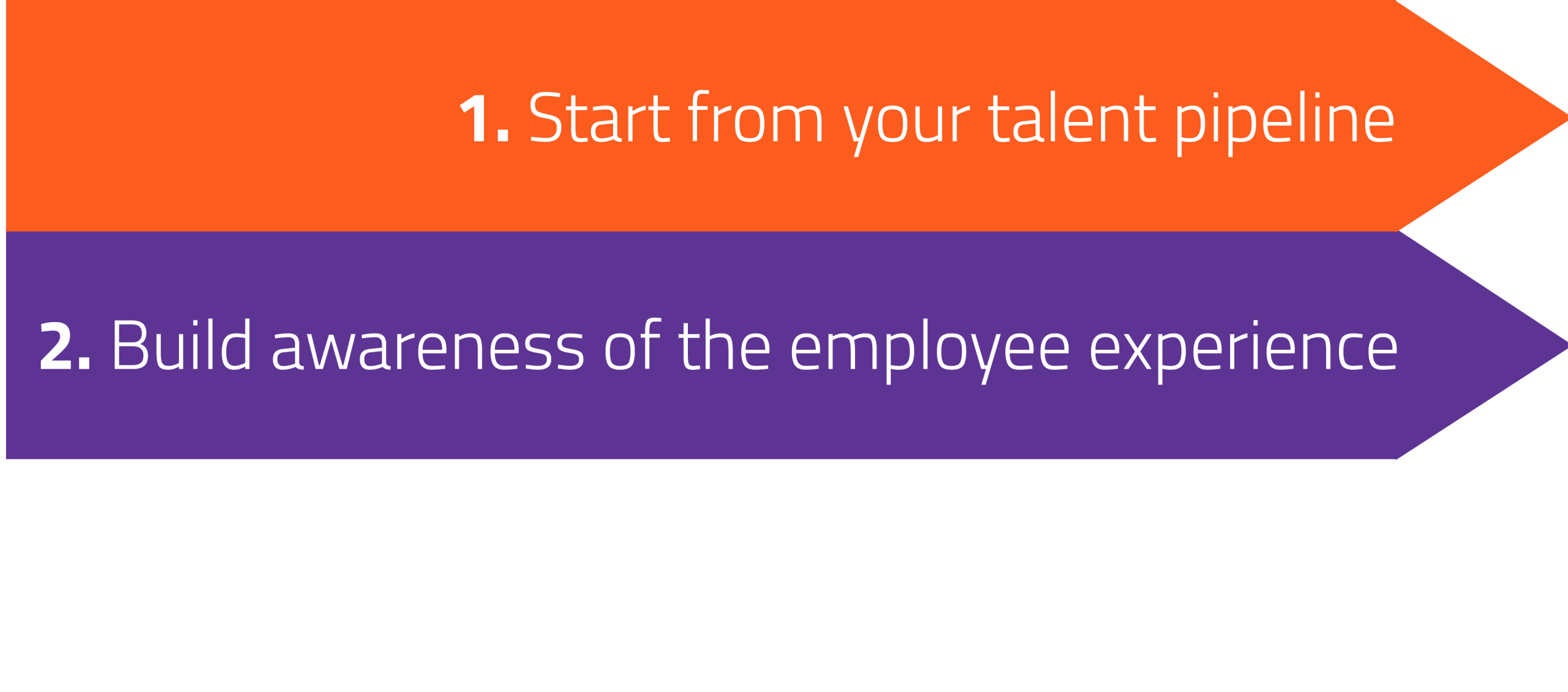
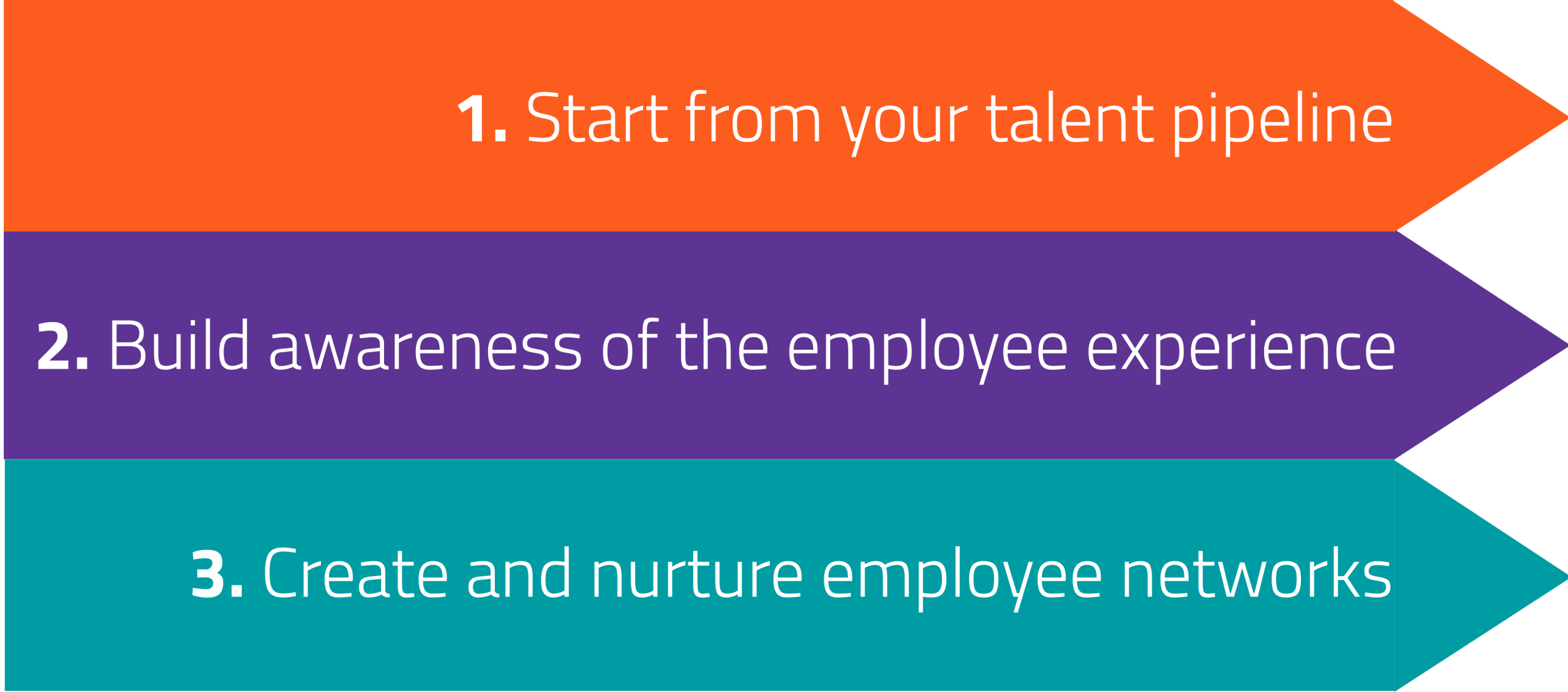
✔️ Make your job postings more inclusive by thinking carefully about the terminology that you use. LinkedIn research found words such as “aggressive” used in job vacancies are more likely to be off-putting to women, for instance.
Share examples and stories of people from all strands of diversity working in your business who are succeeding, because studies show people are more likely to apply for jobs when they see themselves represented in the recruitment material. Make sure to also accommodate diverse talent with varying needs and preferences. Can a role that requires commuting regularly be flexed to accommodate the needs of a person who is disabled, for instance?
✔️ Look at ways to promote those from diverse groups to senior leadership positions. Bridget Lea, BT's consumer division managing director of commercial, says: “Coming up through the ranks, I never saw a senior retail leader who looked like me. It’s critical that organisations have honest conversations about social mobility and diversity in the workplace, and how they can balance the playing field at all levels in the business, including the boardroom.”
But tread carefully when it comes to 'diversity' hires. Nathaniel Wade, co-founder of Wakuda, the marketplace exclusively for Black-owned brands, says retailers must take “meaningful action to create real change within". "There have been ‘diversity’ hires to tick boxes but substantial change to give equitable opportunities is still often missing. Brands need to think of imaginative ways to support, collaborate with and empower the Black community. Internal culture must match external posture."
✔️ There needs to be advocacy and advancement of underrepresented groups. (see also chapter 4 for allyship). To drive awareness and truly understand the employee experience, retailers should regularly hold listening sessions and internal steering groups to minimise group-thinking (when individuals from the same background tend to accept a viewpoint that represents a perceived group ) while managers are encouraged to provide personalised support to their direct reports.
Global research and advisory firm Gartner reported in April 2020 that the most successful organisations in D&I go beyond traditional leadership development programmes that focus solely on skill-building to advance women, LGBTQ+, or racially and ethnically diverse employees. Instead “they also target managers of programme participants to spread awareness of the employee experience of their direct reports, build trust, and enable greater manager advocacy”.
✔️ Create networking programmes for underrepresented talent. When companies do this, HR leaders are two times more likely to report improved organisational inclusion and 1.3 times more likely to report increases in diverse employee engagement, Gartner research from April 2020 found.
Pets at Home has found success in breaking down internal barriers by creating networks. It has launched networks on gender, race, disability, and most recently LGBTQ+, to widen knowledge and understanding of all colleagues (read more on this in chapter 3).
In a recent Be Inspired steering group, one retail leader explained that when diversity working groups came together in their organisation to learn about improving their wellbeing, there was a greater sense of collaboration, stronger relationships and more examples of members feeling happy to speak out. “Different minority groups can also be allies for each other,” they added.
Another attendee revealed they always look to D&I working groups for future talent. The people who are championing D&I often make the best leaders, the retailer said, and they went on to recommend that fellow retail leaders sponsor or mentor such employees.
Covid-19 fallout: what does it means for D&I?
The pandemic has impacted all in society but, from a work perspective, have some groups been harder hit than others? And what can retailers do to support those struggling the most?
Sophie Walker, who was the chief executive of the Young Women’s Trust until late last year, says the crisis has adversely impacted working women with children.
Speaking in September 2020, she said: “Mothers are one-and-a-half-times more likely than fathers to have lost their jobs or quit since the first lockdown began, while more than half of employed mothers say a lack of childcare has a negative impact on how they are perceived and treated by their employers.”
McKinsey reported in March 2021 that the lockdowns had disproportionately affected both women and people of colour, who tend to be concentrated in sectors that have taken a real pounding during the pandemic, such as retail.
It said it had a near-immediate effect on women’s employment, with a quarter of women considering leaving the workforce or downshifting their careers versus a fifth of men.
“While all women have been impacted, three major groups have experienced some of the largest challenges: working mothers, women in senior management positions, and Black women," it reported.
The consultancy firm also found that Black workers were more likely to operate in “vulnerable” sectors, including leisure, hospitality and retail, and also highlighted the fact that Black people were about a third more likely to have health conditions that exacerbated the effects of Covid-19.
Andrew Cobb, Superdrug's IT director and Be Inspired ambassador, believes the growth in remote working led by the pandemic has had a negative impact on social mobility.
“We typically see [downsides] with knowledge transfer and informal training of new employees or more junior members of our teams. We also know that the office environment can provide a safe space for those whose home set-up may not be ideal for remote working.”
“A lot of disabled people have asked to work at home for some time but employers have been unsympathetic towards them – it has taken a nationwide pandemic to make this happen"
There are , however, alternative perspectives that demonstrate more positive advantages of the pandemic.
Samantha Renke, TV presenter and disability activist, believes Covid could be a “turning point” for people with disabilities. Renke says the increase in remote working from the pandemic could help open up more roles to the disabled community as it minimises access issues.
“A lot of disabled people have asked to work at home for some time but employers have been unsympathetic towards them – it has taken a nationwide pandemic to make this happen.”
Fiona Daniel, co-founder of networking platform Inclusive CEOs, also believes there are many benefits to D&I from Covid as there has been a “removal of red tape” and more “out of the box thinking”.
Daniel highlights “in the face of adversity, D&I thrive, because when different kinds of minds work together, challenges are much easier to overcome.”
Ways to minimise impact for your staff
✔️ Offer flexible working hours, if you don’t already. This will enable working parents in your teams to accommodate childcare. Consider offering extra wellbeing days to employees to spend time with family.
✔️ While home working remains the norm for many ahead of June 21 restrictions easing, ensure you have office space accessible to provide support to those who need it.
✔️ Take time out to have informal one-to-ones with team members and hold informal virtual group meetings. Daniel says inclusive leadership in the new normal requires greater levels of emotional intelligence so having patience, empathy and listening to staff is key. At a recent D&I steering group with retail leaders, organised by Be Inspired, attendees advocated for more streamlined, clearer communications from managers, summed up as “old-school line management done brilliantly”.

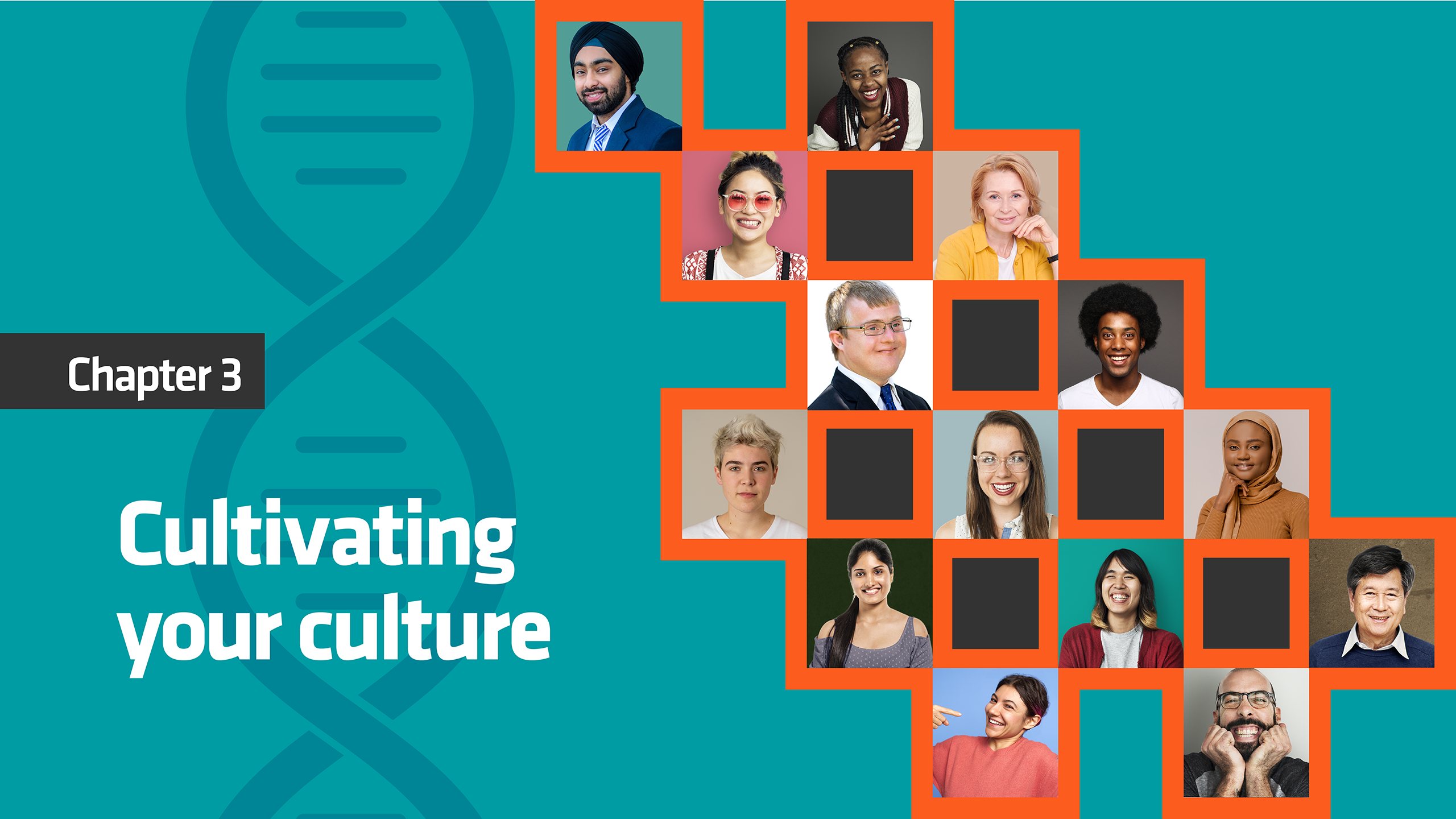
From making behavioural changes and adopting technology that supports cultural transformation to partnering with others that champion diversity, there are many ways UK retailers can step up their efforts to ensure D&I drives long-term business growth.
This chapter features six retailers with trailblazing methods to learn from and be inspired by.
Pets at Home
Pets at Home has concentrated its efforts to make D&I the responsibility of everyone, not just HR. The retailer recently launched a Diversity and Inclusion Leadership Forum, led by CEO Peter Pritchard, to develop its strategy.
Pritchard tells us that the forum has already made important commitments among its leadership including “taking visible action, supporting our new colleague networks and making sure we welcome everyone”.
Other ways retailers can follow Pets at Home's lead:
- Creating colleague networks to represent staff and allies.
Pets at Home has four new networks for disability, gender, ethnicity and LGBTQ+. Each has an executive sponsor and an agreed set of principles to guide them and encourage cross-network collaboration. - Making small, but impactful, changes for the benefit of customers.
“One of our store colleagues recently observed that it was difficult for lip-reading customers to communicate with colleagues when they are wearing masks,” Gemma Parker, D&I lead, explains. "The colleague raised this with our management team, and we now display signs on all our till screens letting customers know that, if they indicate they need to lip-read, our colleagues will stand behind a screen and remove their mask to make communication easier.”
Biocoop
French organic food chain Biocoop topped the Financial Times' annual line up of Diversity Leaders in November 2020, which polls employees for their views on how inclusive and diverse employers really are.
Biocoop has embraced a progressive agenda in the following ways:
- Operating a mentoring programme that prioritises the hiring of people from poorer urban neighbourhoods , which are often home to generations of immigrants of Arab and African descent.
- Establishing a three-year plan that by late 2022 all men and women across its business would be paid the same and offered the same opportunities to advance. As of late 2019, the company said about two-fifths of the 1,000 staff at its central office were women.
- Committing to hiring more people with disabilities, with a goal of 6% of its workforce by 2023, up from 3% in 2019.
Speaking to the FT, Biocoop president Pierrick De Ronne said that he wanted to do more by adding specific criteria on hiring and equal opportunities. “We must remain radical. There will be no room in the future for lukewarm, dull companies.”
Marks & Spencer
M&S is drilling down on promoting inclusivity and targeting diversity following CEO Steve Rowe’s message to staff in summer 2020, in which he said actions undertaken by the retailer so far “were not good enough” and that he would be "putting my personal weight behind this".
Rowe’s strategy is being led by group head of inclusion & diversity Cleo Thompson, who joined the business last year. She says: “My job is to help facilitate long-term, systemic change across the business to really help us ensure that M&S delivers an inclusive culture within a diverse environment.”
To become a more inclusive place to work and shop, M&S is:
- Supporting the growth of its seven colleague networks: LGBTQ+, Gender, Buddy (which supports colleagues who live with mental and physical health challenges), Culture and Heritage (for those of all races and faiths), Veterans, Family and Carers and its newest network, the Menopause Group.
- Driving inclusivity in-store by rolling out sunflower lanyards for those with hidden disabilities, introducing quiet shopping hours for those with autism and other sensory conditions, and making assistance dog training mandatory for all customer assistants.
- Partnering with external organisations for change. Alongside Be Inspired, this includes 10,000 Black Interns (which offers paid work experience, training and development opportunities and mentorship and sponsorship for the Black community), The Halo Code (encourages and supports Black colleagues to wear their hair how they wish), Pearn Kandola (delivers inclusive leadership training), and tie-ups with inclusion charities which customers can donate to via Sparks.
The retailer is also rethinking its products and ranges: for instance, it recently launched an adaptive kidswear range for children with disabilities and it has partnered with Fashion Minority Alliance to ensure its clothing shoots are inclusive.
Paul Friston, executive sponsor for inclusion and diversity, says: "For M&S to be successful, we must understand and reflect our diverse customer base and the communities in which they live and shop.”
The Very Group
The Very Group topped Retail Week’s 2020 ranking as the UK’s most improved retailer for gender pay equality and it has been implementing change across other strands of diversity, too.
“We’ve built the foundations for an inclusive environment where everyone feels like they belong,” says director of reward, inclusion and colleague experience Debs Chapman. "However, we know we still have a huge amount of work to do, and we’re absolutely committed to strengthening diversity and inclusion at Very."
Very's initiatives to inspire other retailers include:
- Investing in 40 leaders via an internal nine-month programme to help leaders “exhibit increased humility and flexibility, engender trust, create psychological safety and foster inclusion within their teams and across our business".
- Tie-ups with partners such as InnovateHer which, through outreach to schools, helps to give girls and non-binary teens the confidence and skills to pursue careers in technology.
- A paid internship programme to encourage more young people into careers at Very.
- Colleague-led networks including WAVE (Women At Very) and PAVE (Parents at Very).
- A commitment to a new hybrid way of working post-pandemic, increasing “flexibility for teams and helping parents and carers progress their careers”.
- Working with the Royal National Institute of Blind People to audit sites for accessibility.
Very’s D&I focus extends outside of its company culture to the wider business strategy. For instance, it has developed a size diversity feature with Nike which allows customers to view how items fit on female models of size 8, 14 or 18.
“We’re now extending this feature to our own brand, because we know it’s something our customers value,” explains Chapman.
Beaverbrooks
British jeweller Beaverbrooks is focused on making D&I an intrinsic part of its business. Managing director Anna Blackburn says: "We acknowledge that there’s no quick fix when it comes to diversity and inclusion, the real fix must be long-term and requires sustained commitment.
“For us, it’s about understanding that each individual is unique, recognising our differences and celebrating people for who they are."
The ways Beaverbrooks is progressing the D&I agenda include:
- Establishing a D&I committee that meets monthly and is responsible for developing its strategy and communicating it throughout the business.
- Pledging to support Black and minority ethnic jewellers and silversmiths as part of the MasterPeace Academy, the UK’s first culturally relevant jewellery academy.
- Holding focus groups. “We’ve been holding focus groups for 25 years, but in summer 2020 we invited colleagues from across the business to hear ideas and opinions of how we can improve D&I.”
Superdrug
Superdrug offers a good example of taking accountability for D&I. Its strategy is called ‘Everyone Matters’ and is made up of six pillars which have become internal networks: gender equality, LGBTQ+, BAME, wellbeing, social mobility (known as Access All Areas), and flexibility at work (called Make Work Work).
Each pillar is made up of a director sponsor, a steering group of employees from across the business and a senior member of the HR team.
Retailers can learn from Superdrug’s networks in the following ways:
- Each group holds regular events and celebrates key dates to raise awareness of their pillar.
- Each group drives awareness and engagement via the internal communications platform The Hub.
- Each group builds partnerships with organisations relevant to their pillar – this includes the LGBT Foundation, Carers UK, Drive Forward Foundation, and Retail Week’s Be Inspired.
Recent outcomes include hosting a session for National Coming Out Day where LGBTQ+ employees talked to a group of 40 senior leaders about their experiences, summer work experience for young adults leaving care, and a store manager social mobility pledge.
- Four retailers featured in this chapter – Beaverbrooks, Marks and Spencer, Pets at Home and Superdrug – are proud retail partners of Be Inspired. Organisations that back the programme are showing their commitment to addressing diversity at all levels of retail and being the best businesses in the sector at helping develop future talent. Find out more about how you can benefit as a retail or non-retail partner here.




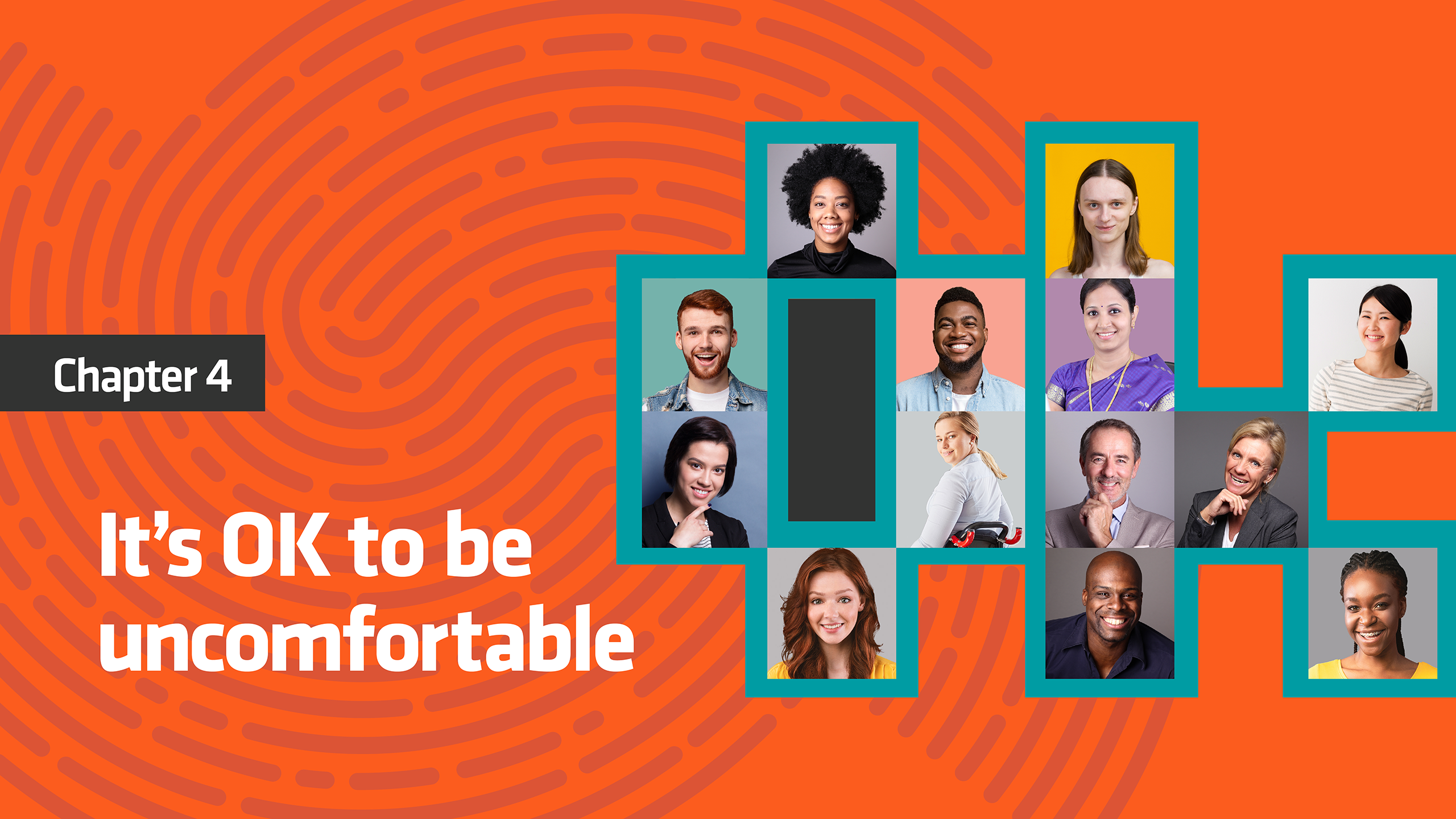
Being a good listener and asking questions is essential to foster a safe and inclusive workplace culture. To bring about lasting change, everyone must lean into D&I conversations, even if it feels uncomfortable. Crucially retailers must make allyship core to their businesses.
How to embrace allyship
Many of us hold positions of power and privilege throughout our career – often without realising it. We can use this power to become an ally; being a spokesperson and advocate for underrepresented people within the industry.
Support from allies and collaboration with underrepresented groups has been proven to improve business productivity and career outcomes. For allyship to work, different groups of underrepresented communities must be allies to each other; it's not just about one type of person being an ally.
The journey to true allyship can be broken down into three simple steps, according to Ada Tagoe, Google’s key D&I and allyship lead:
1. Learning: a time for self-reflection and gathering information
2. Engagement: setting up employee working groups
3. Action: speaking up as a true ally
Step three is arguably the hardest. At a Retail Week steering group held in March, retailers said it was difficult to “speak out when things are not going right and to challenge people without being perceived as aggressive or threatening”.
Retailers can leverage employee working groups and use these as a tool for collaboration. During the steering group, it was highlighted that working groups are most effective when employees can share information online on reading they’ve been doing around D&I, which sparks conversations and creates a sense of belonging where teams can be inspired by others.
Sponsors as a solution
As a form of allyship, retail leaders should look to become sponsors of employee working groups.
Sponsors are those in leadership positions who go beyond offering guidance and advice to more junior colleagues and act as advocates by using their leadership skills, power and influence to proactively help build and advance the careers of ‘sponsorees’.
For instance, Sainsbury’s chief executive Simon Roberts is the grocer’s sponsor for ethnicity, religion and belief. He has been vocal about “standing with Black colleagues”, using his privilege as a white male to represent Black and ethnic minority employees.
Similarly, Kevin O’Byrne, group chief financial officer at Sainsbury’s, is an influential LGBQT+ board sponsor. In 2020, the grocer was voted the leading retail employer for LGBTQ+ people in the Stonewall Workplace Equality Index – indicative of the bar O’Byrne is setting not just for Sainsbury’s, but the wider industry.
Can I say that?
The language we use helps to champion D&I but it can be daunting to know what to say, and requires terms and practices to be unlearned.
Here are three supportive principles to help frame your thinking:
✔️ Be specific whenever possible when talking about a person, community or population. The term BAME, for example, has come under criticism recently for 'lumping minorities together'.
✔️ Get to grips with intersectionality. First coined by American lawyer and civil rights advocate Kimberlé Williams Crenshaw in 1989, intersectionality is how race, class, gender and other individual characteristics overlap and intersect with one another. Pinpointing a person’s multiple identities can help clarify the ways in which they can simultaneously experience privilege and oppression. For example, a Black woman in the UK does not experience gender inequalities in exactly the same way as a white woman.
✔️ If you don’t know, ask. Ultimately, progress on D&I can only come from opening up conversations and being willing to ask questions.
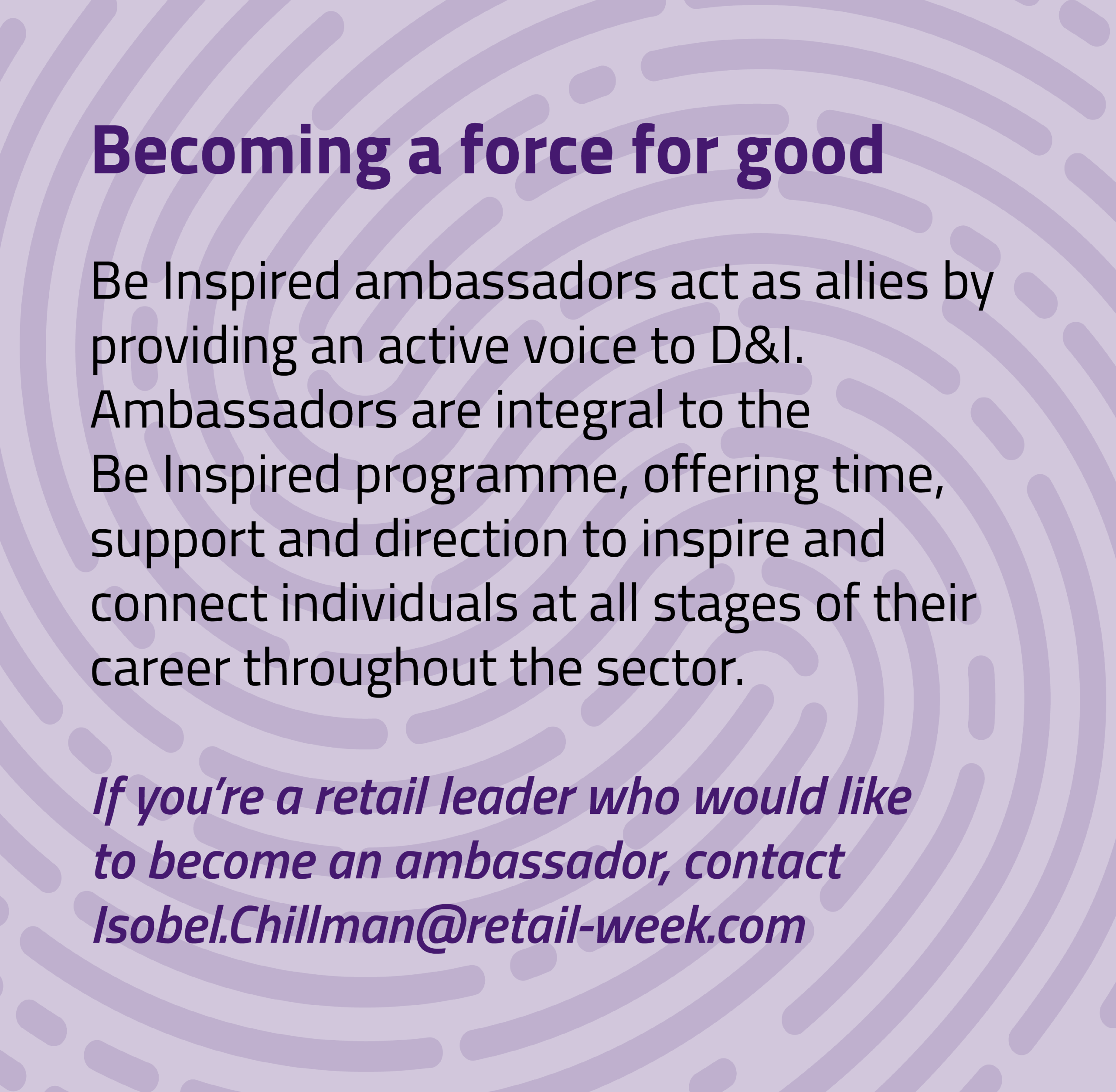
Asda: a lesson in conversation starters
Asda offers a great example of how to start conversations around subjects that may feel uncomfortable. Last September, the grocer ran its Inclusion Month to help continue building knowledge and confidence of D&I with its colleagues.
As part of the month, it approached colleagues to share their D&I stories, advice and conversation starters. Asda filmed these insights, circulating the 60 second videos internally across its team platforms and externally via social media.
Gareth Hind, head of diversity, inclusion, involvement and engagement, says the campaign “was born from a significant listening exercise where we heard loud and clear that things that are getting in the way of discussing D&I are a fear of getting it wrong and a lack of confidence and knowledge in the D&I space.
"The videos were super impactful with colleagues sharing their stories and helped drive conversation at a local level."
These videos included Ellie, a transgender colleague at Asda who shared how it felt being ‘deadnamed' (when someone, intentionally or not, refers to them by the name they used before they transitioned) and misgendered (when someone refers to them as the wrong gender), and Feroz, who explained that his primary language is Gujarati and therefore he may sometimes pause when speaking in English as he is translating what he wants to say.
Externally, the videos were viewed by over 250,000 people, with Hind explaining that the activity “not only provided a vehicle for educating and starting conversations in Asda, but also enabled those same conversations to be happening outside of Asda too”.
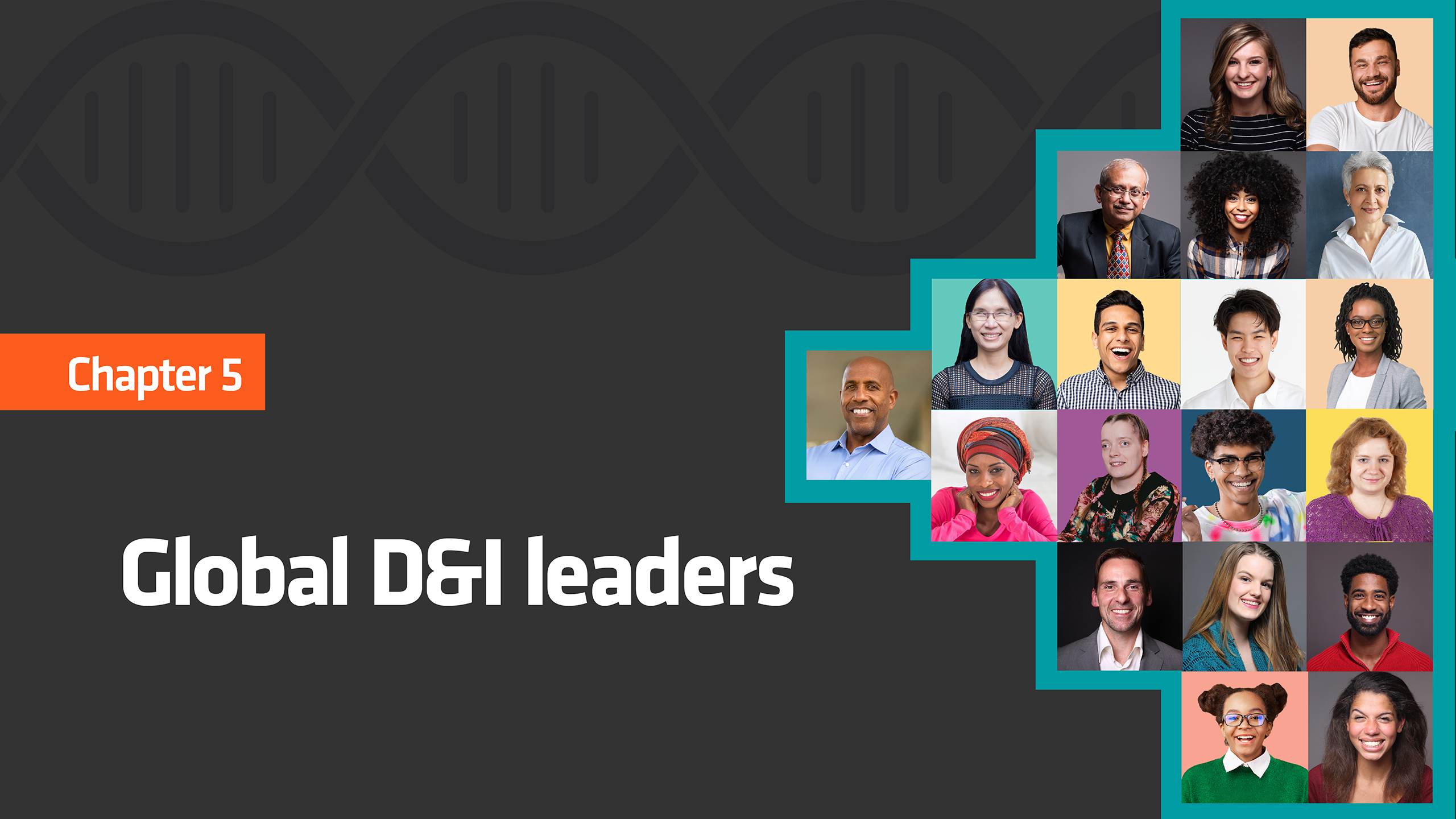
If the last year has shown us anything, it’s that retail can’t afford to be insular or siloed as it risks hindering progress. Below, we celebrate four organisations operating outside of retail that are leading the way in D&I. Discover how they’re advancing and championing equity and what you can do to follow in their footsteps.
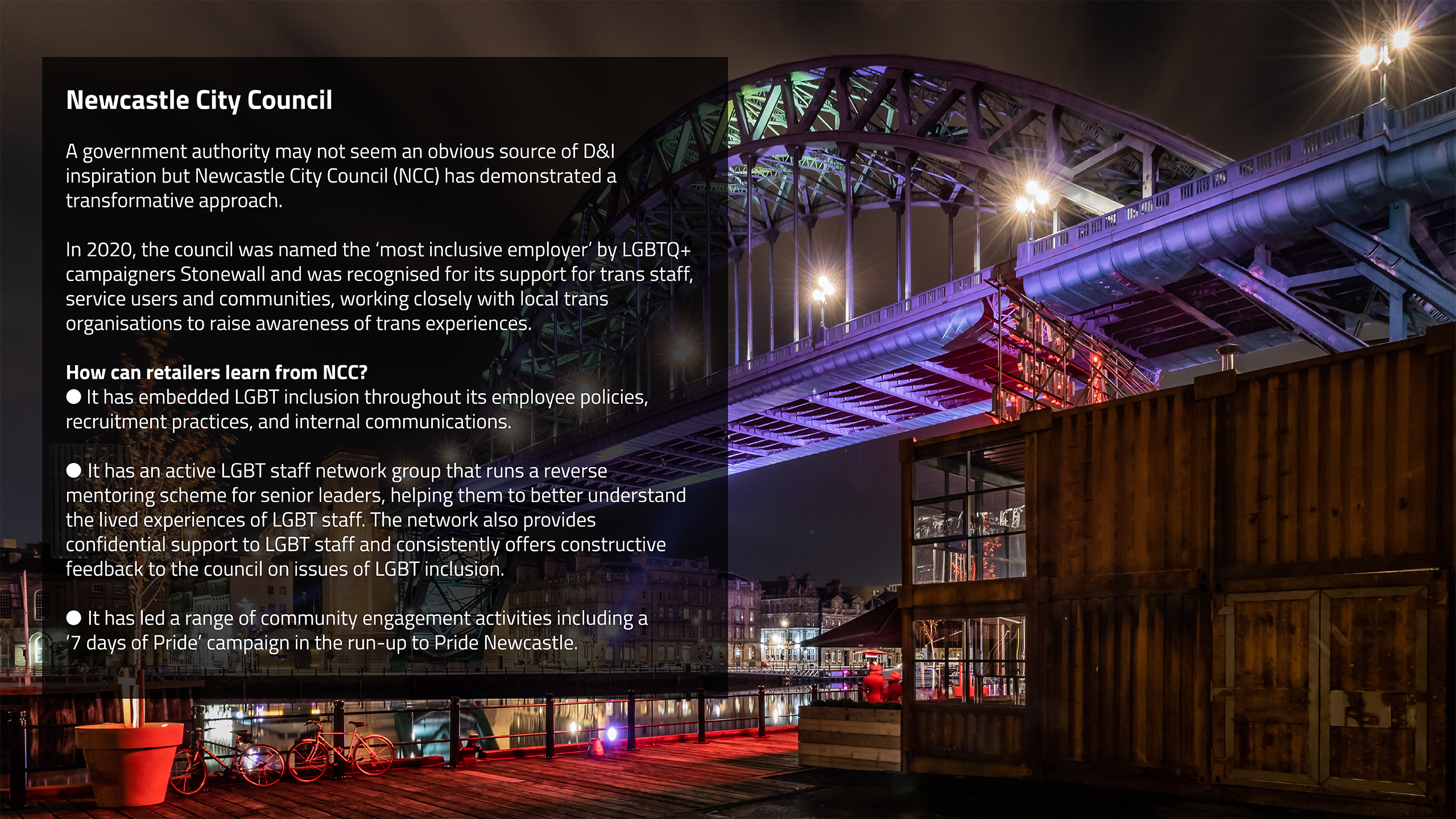
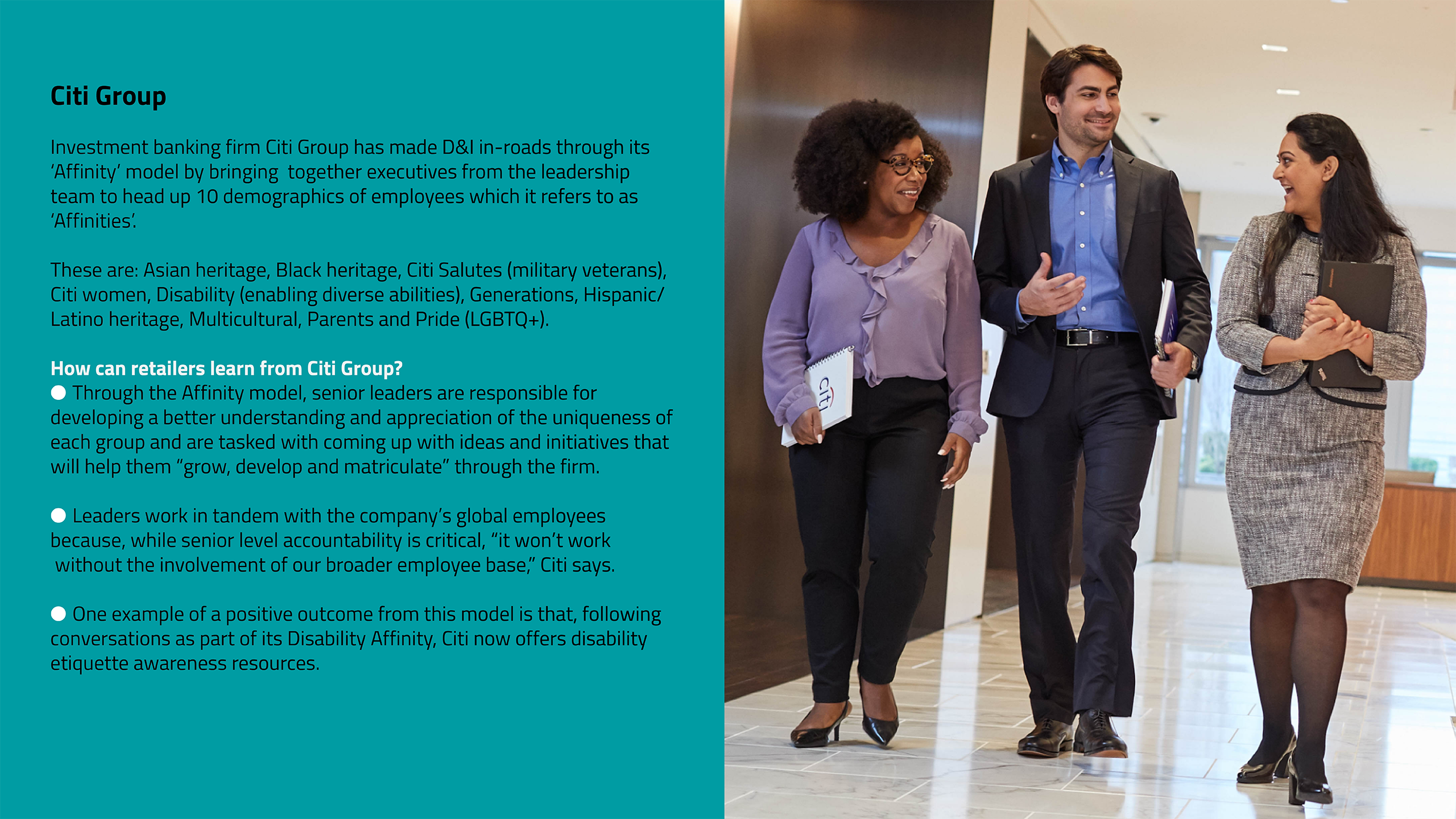
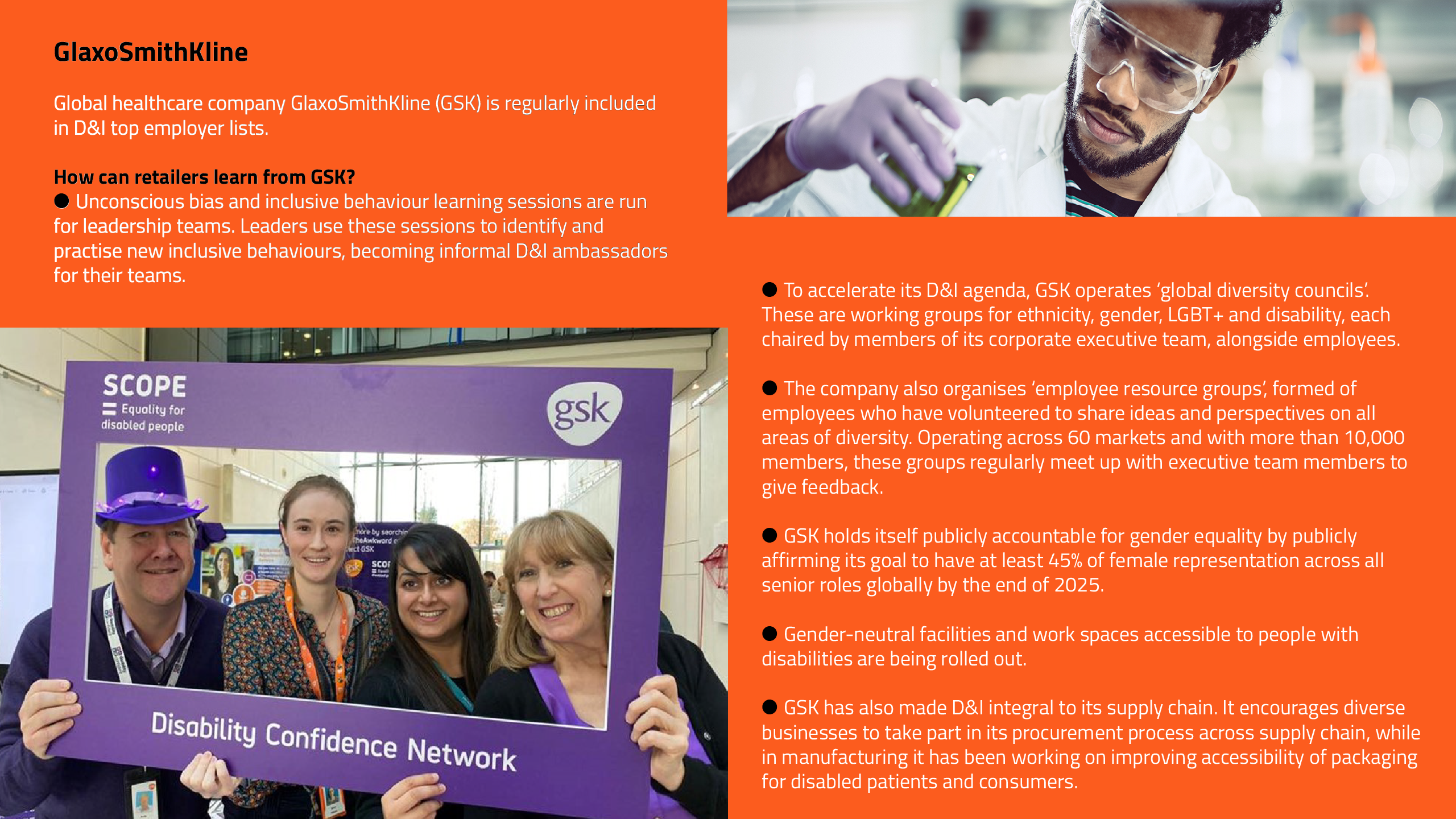
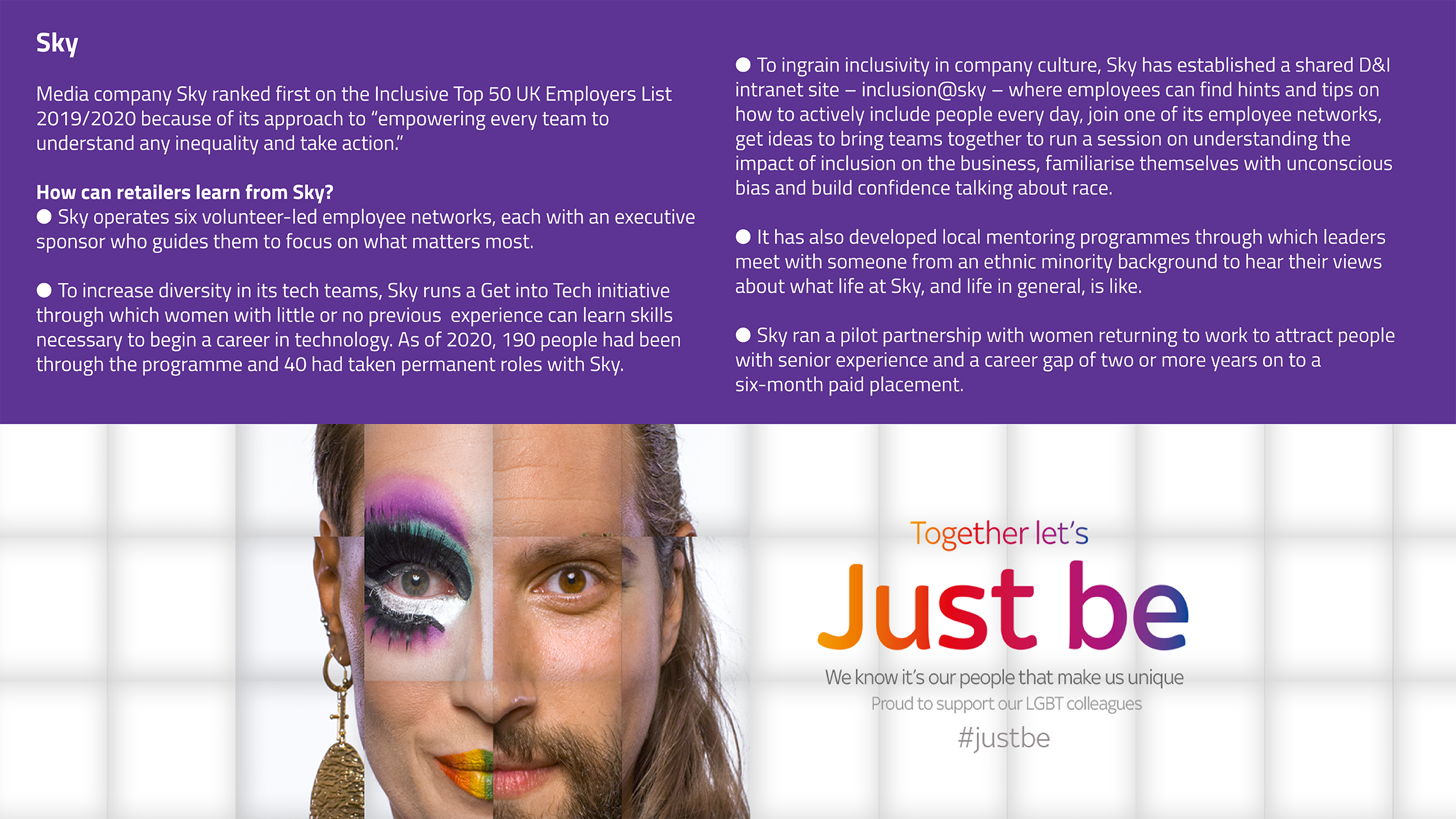

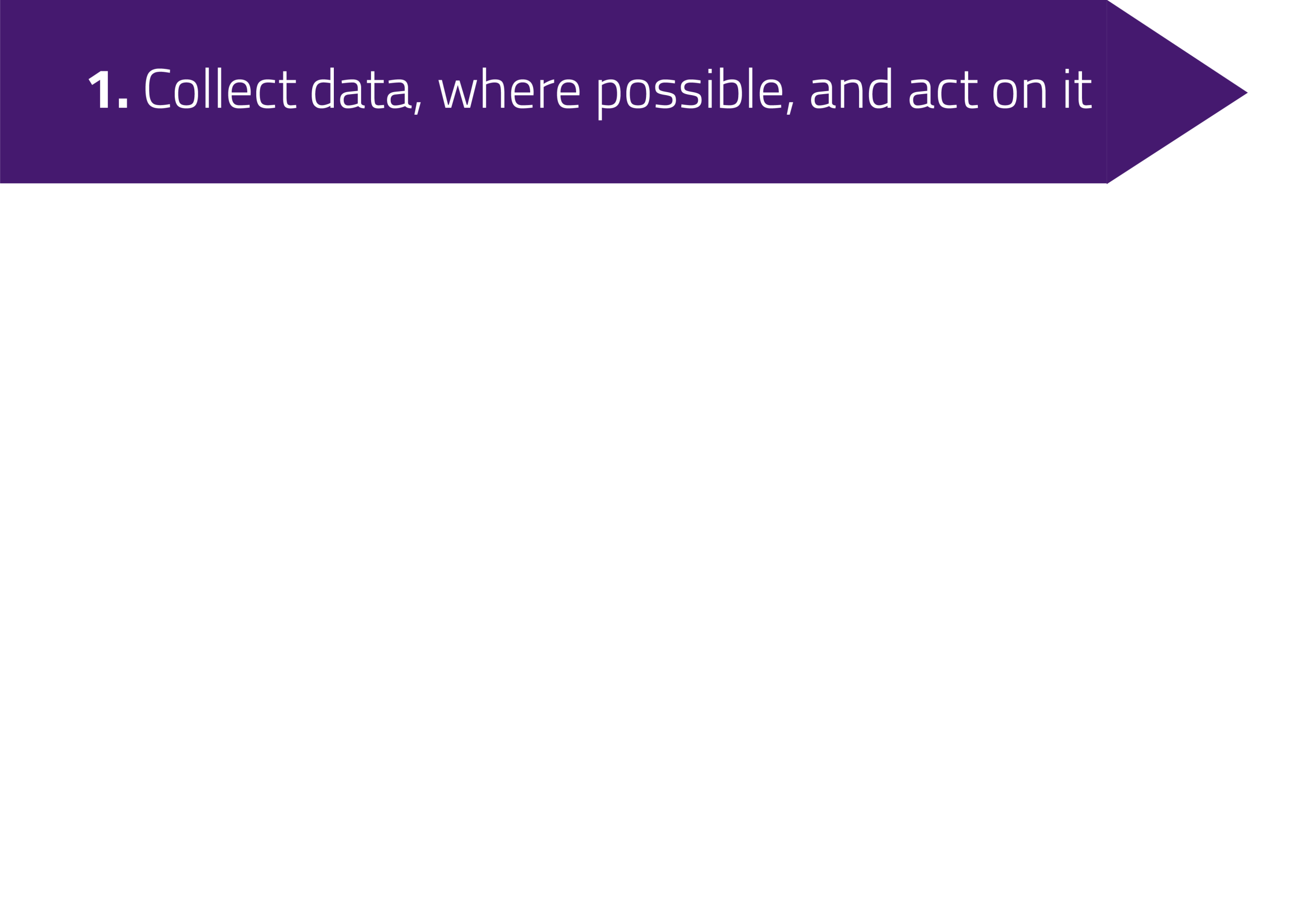
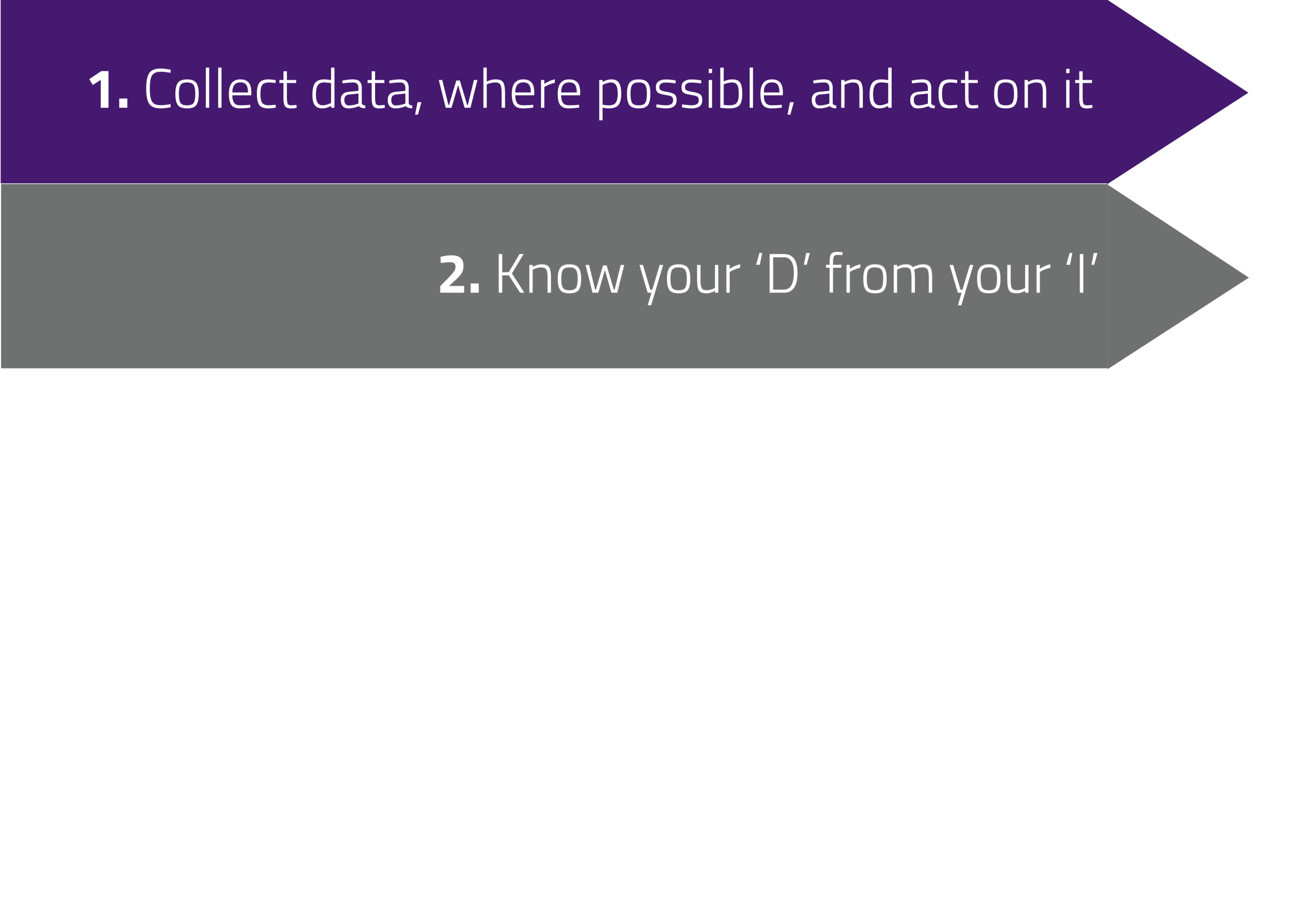
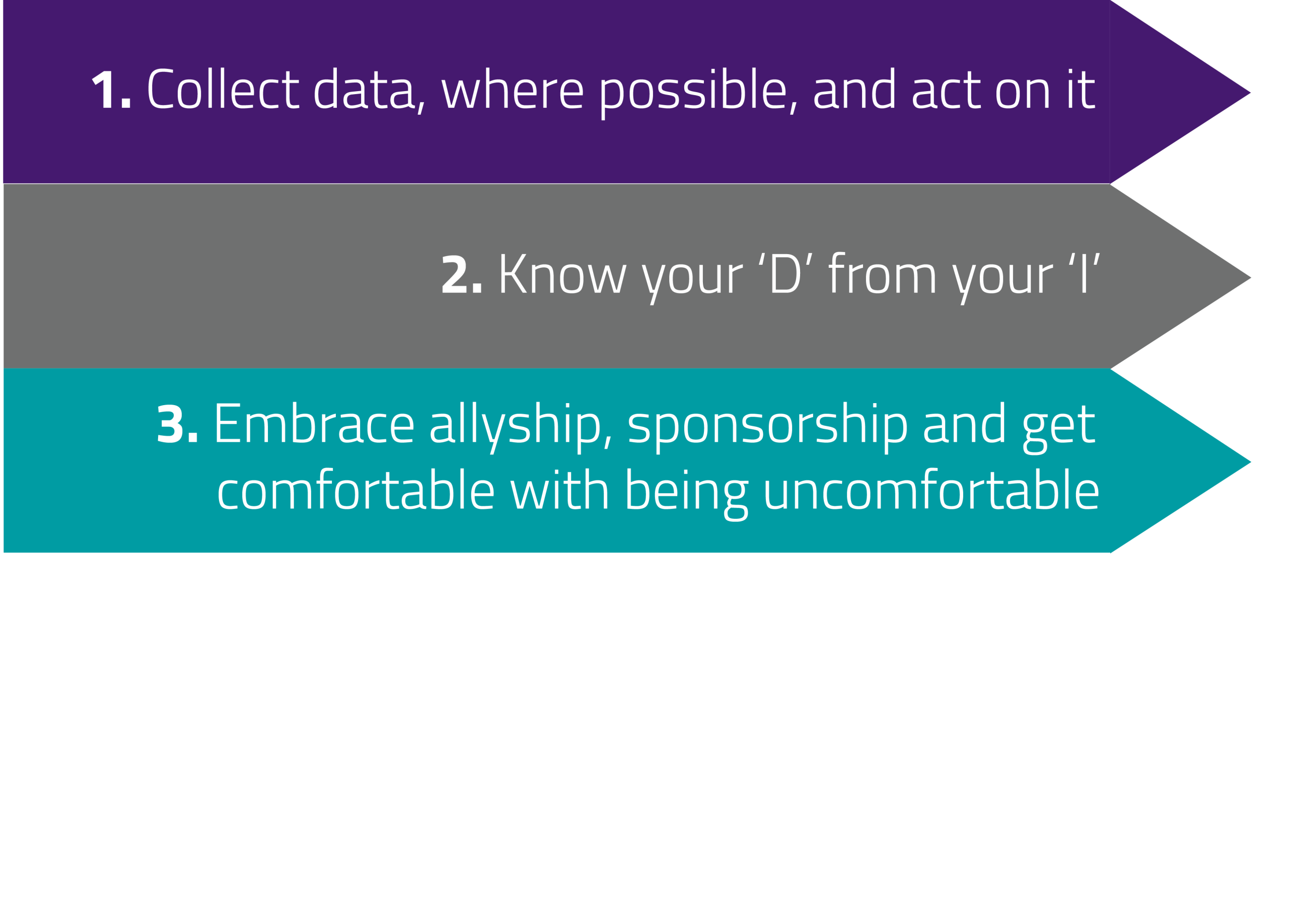
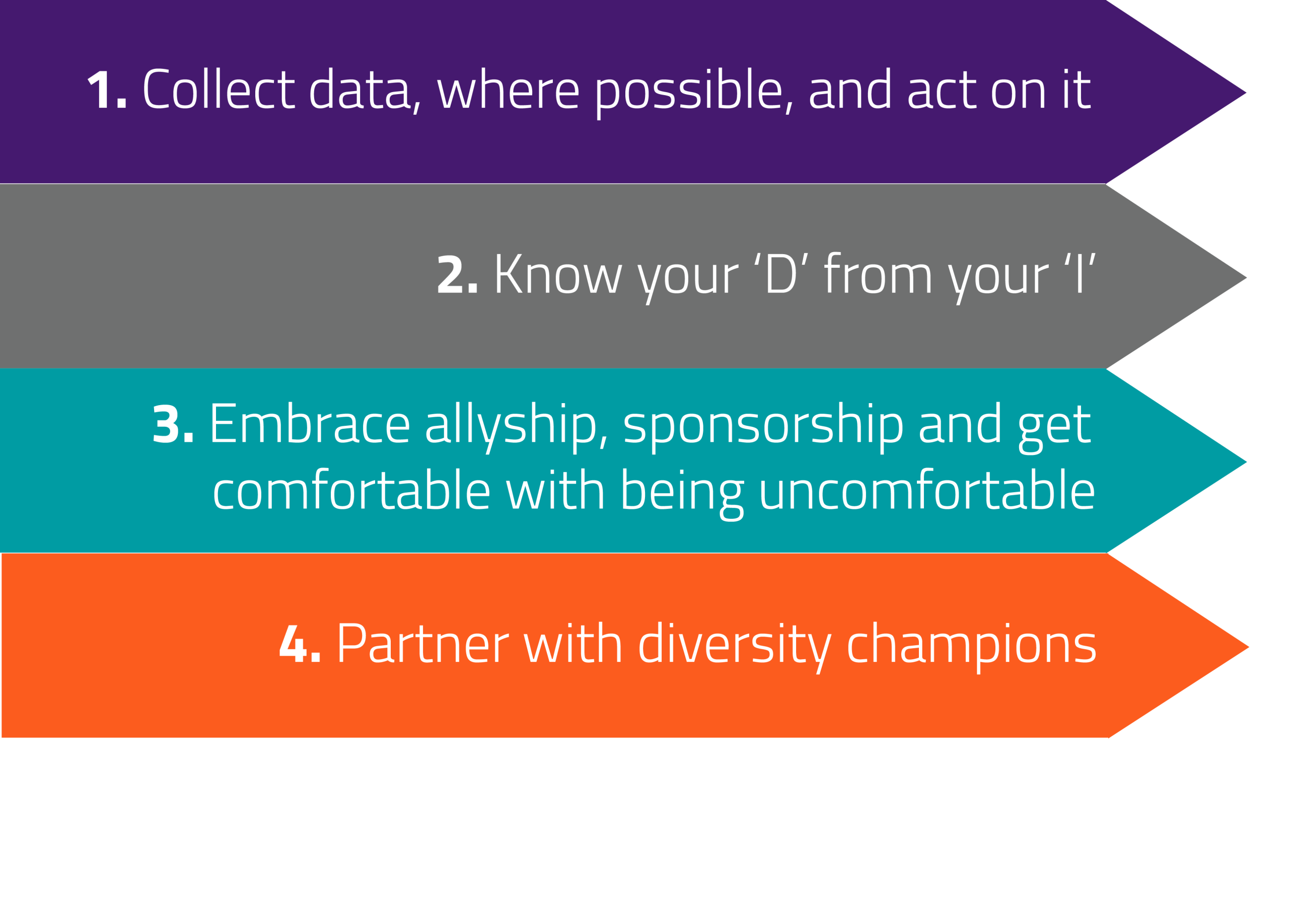

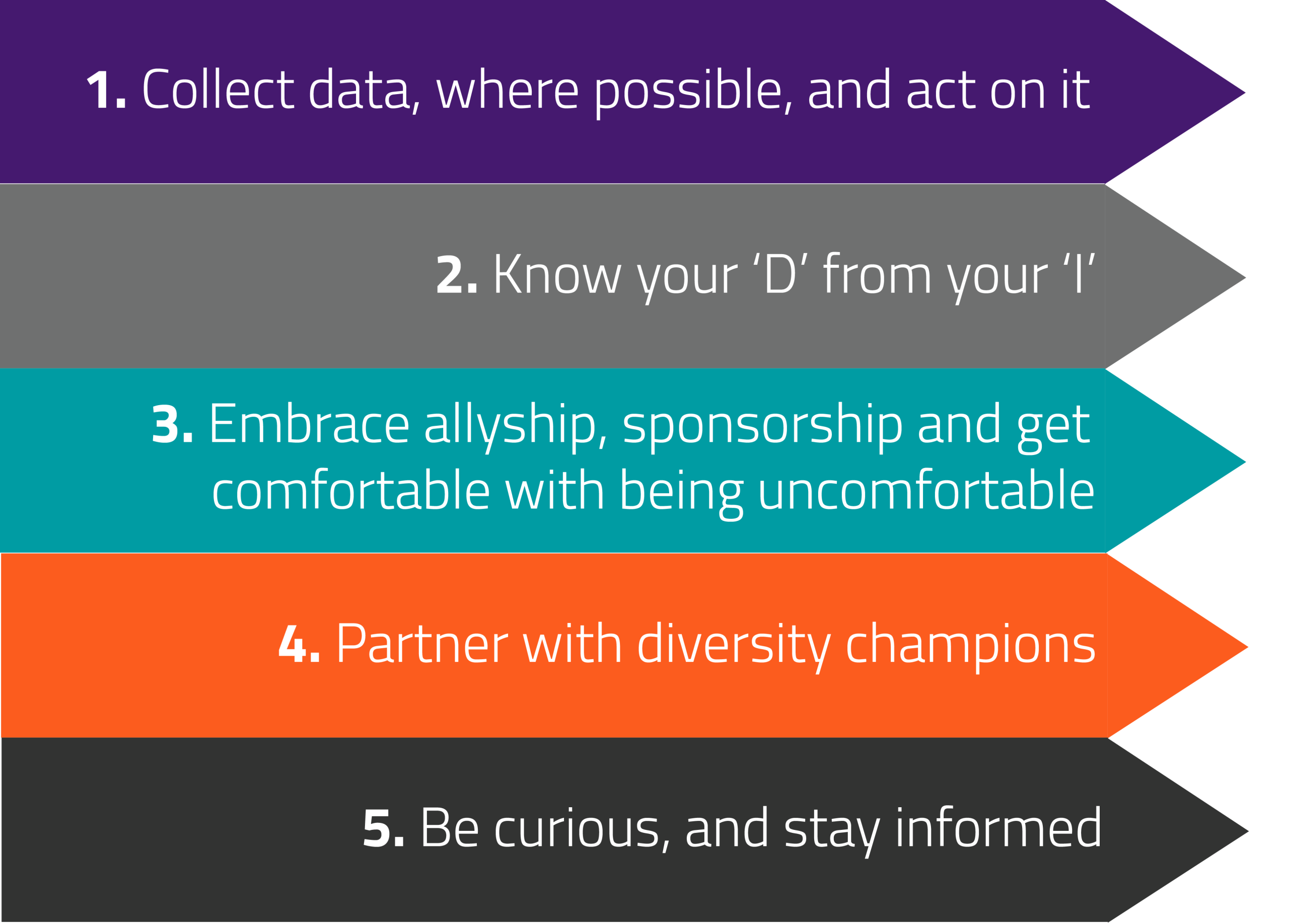
Five building blocks to D&I strategy success
Take these actions forward to truly embed D&I into the DNA of your company:
Don’t underestimate the power of diversity data in informing D&I strategy. As our report has shown, data has its limitation but it does provide a starting point to track progress and identify weak spots. Publishing your progress will also make it easier to hold yourself accountable.
Leading with inclusion will help ensure your strategy is a success. Bring inclusion into every conversation and use our three steps from chapter 2 to embed change across your business.
Speaking out on behalf of, and representing, marginalised voices is the responsibility of all within retail. While it can be daunting to know the right thing to say, use our pointers in chapter 4 to think about how to frame discussions and start conversations.
No business can have all the answers on D&I which makes collaboration integral to building authority. Be Inspired is the leading D&I initiative for UK retail; find out how you can benefit as a partner here.
The D&I landscape is constantly shifting and businesses must be present and have an active and inclusive approach. Learn from retailers and organisations like those in chapters 4 and 5, tap into resources that are readily accessible online, and, above all, work with your own teams and colleagues. Be Inspired steering groups found that holding internal discussions around D&I and hearing directly from your teams – from the shop floor to the boardroom – will help shape your D&I strategy going forward and uncover gaps and opportunities.
Find out more about Be Inspired
Our mission is to give everyone – regardless of age, background, gender, race, sexual orientation or ability – the tools, inspiration, knowledge and connections needed to fulfil their career aspirations.
Together with our partners and ambassadors, we believe in being active participants in driving progressive change and equality in one of the UK’s most important sectors.
We will drive inclusivity and unlock ambition through practical learning and development-focused content across retail-week.com, our free to attend virtual workshops, mentoring events, steering groups and conferences.
Find out how you can get involved here.
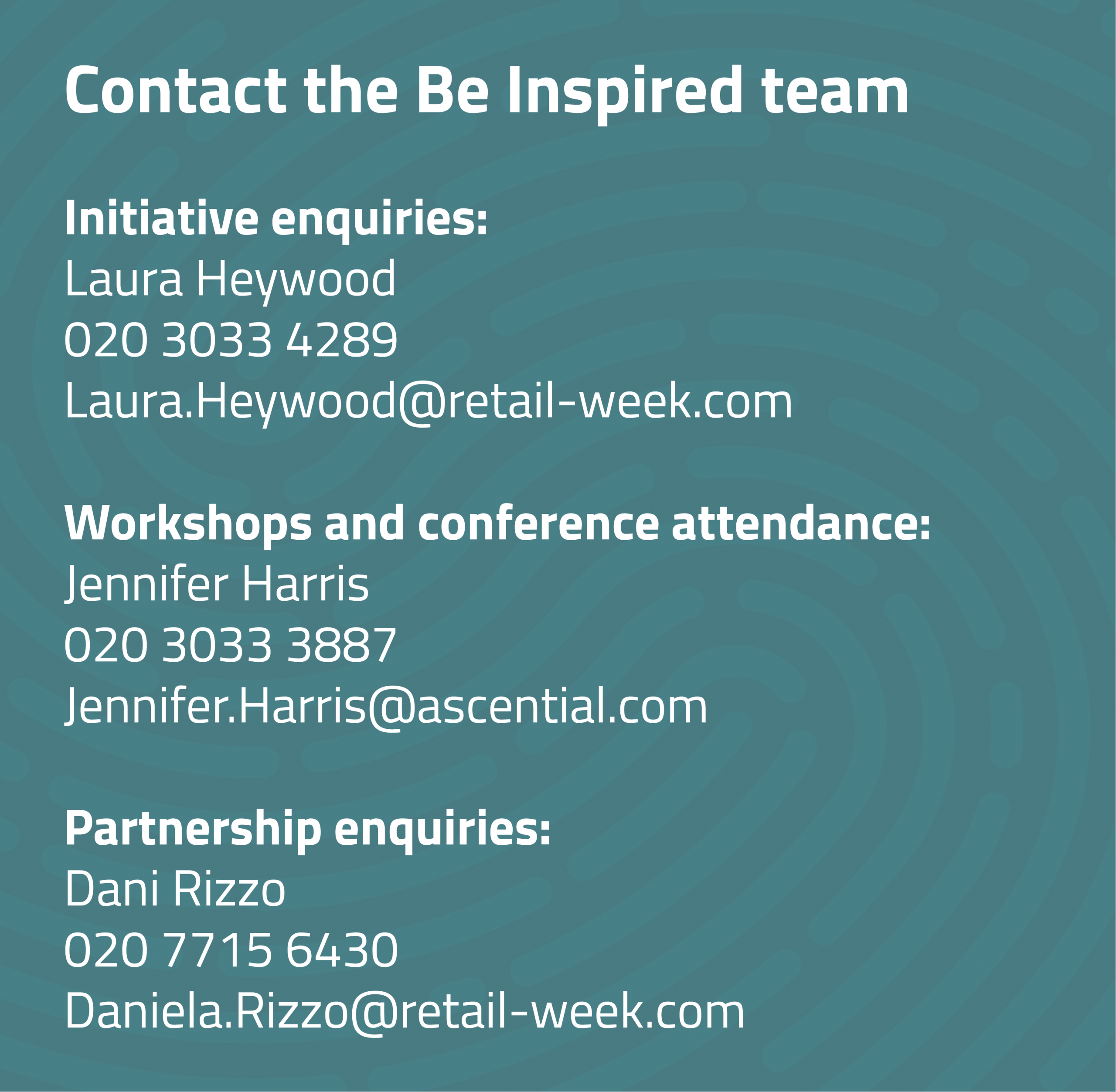

Partner viewpoint
Diversity and Inclusion is a journey, and every organisation will be at a different starting point. Whilst many organisations are committed to setting D&I goals, they aren’t always seeing the progress they want to. This is particularly evident in retail.
It’s fundamental to understand not just representation numbers, but also belonging sentiment
We are learning that executive and staff buy-in are equally important to move this work to the next level. It’s fundamental to tune in with the workforce, and understand not just representation numbers, but also belonging sentiment.
An employee centric approach is key to success – along with establishing a process to collect data in a way that is compliant with the law, and culturally acceptable to staff, which can be a real challenge.
We need to pinpoint where in the employee lifecycle patterns of inequality are occurring and what drivers influence these, so we can take targeted actions
If we want to improve the diversity of our workforce we need to pinpoint exactly where in the employee lifecycle patterns of inequality are occurring and what drivers influence these, so we can take targeted actions based on these insights. This can take us from setting targets, to actually achieving them.
It seems now more than ever that the systemic inequalities that directly affect our society, both in our professional and personal lives, have brought critical conversations into the workplace and shined a spotlight on the progress already achieved, and the work around diversity we still need to do.
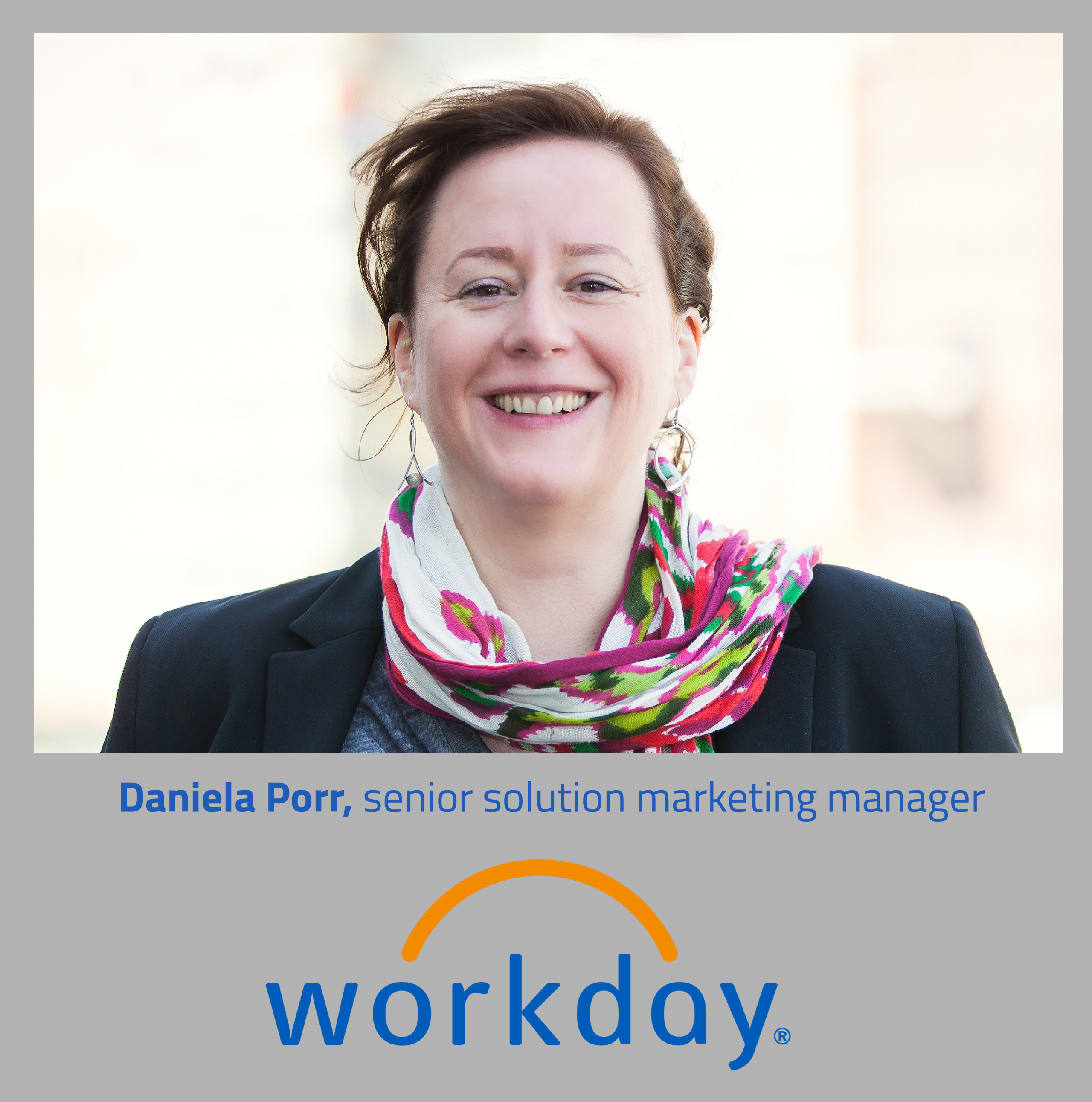
Diversity DNA
Written by Megan Dunsby
Produced by Laura Heywood, Rachel Horner, Stephen Eddie and Sam Millard
Published in association with Workday and data partners Korn Ferry and Green Park




